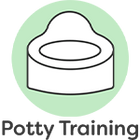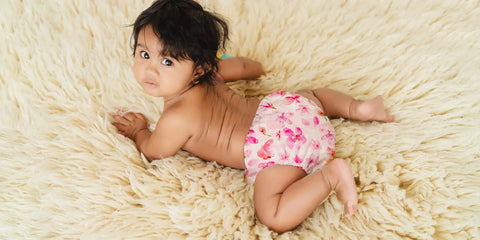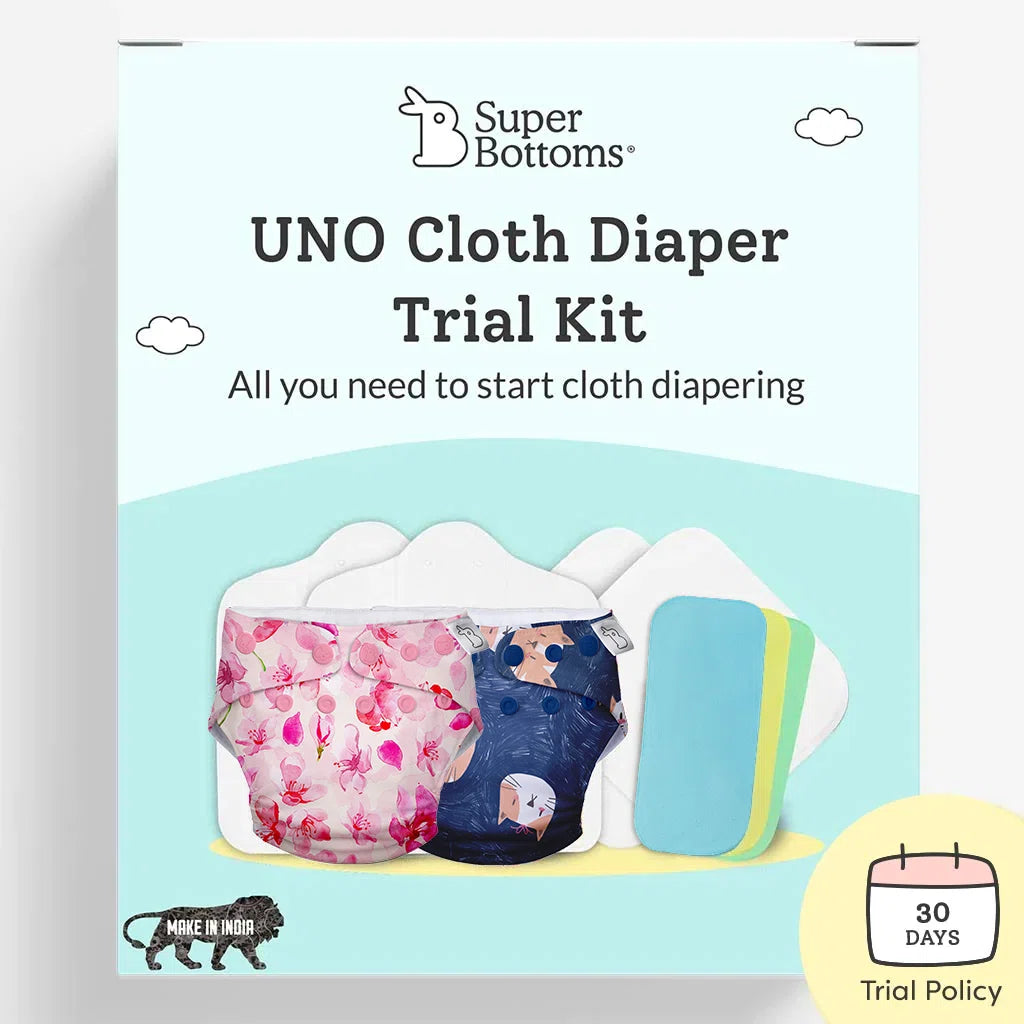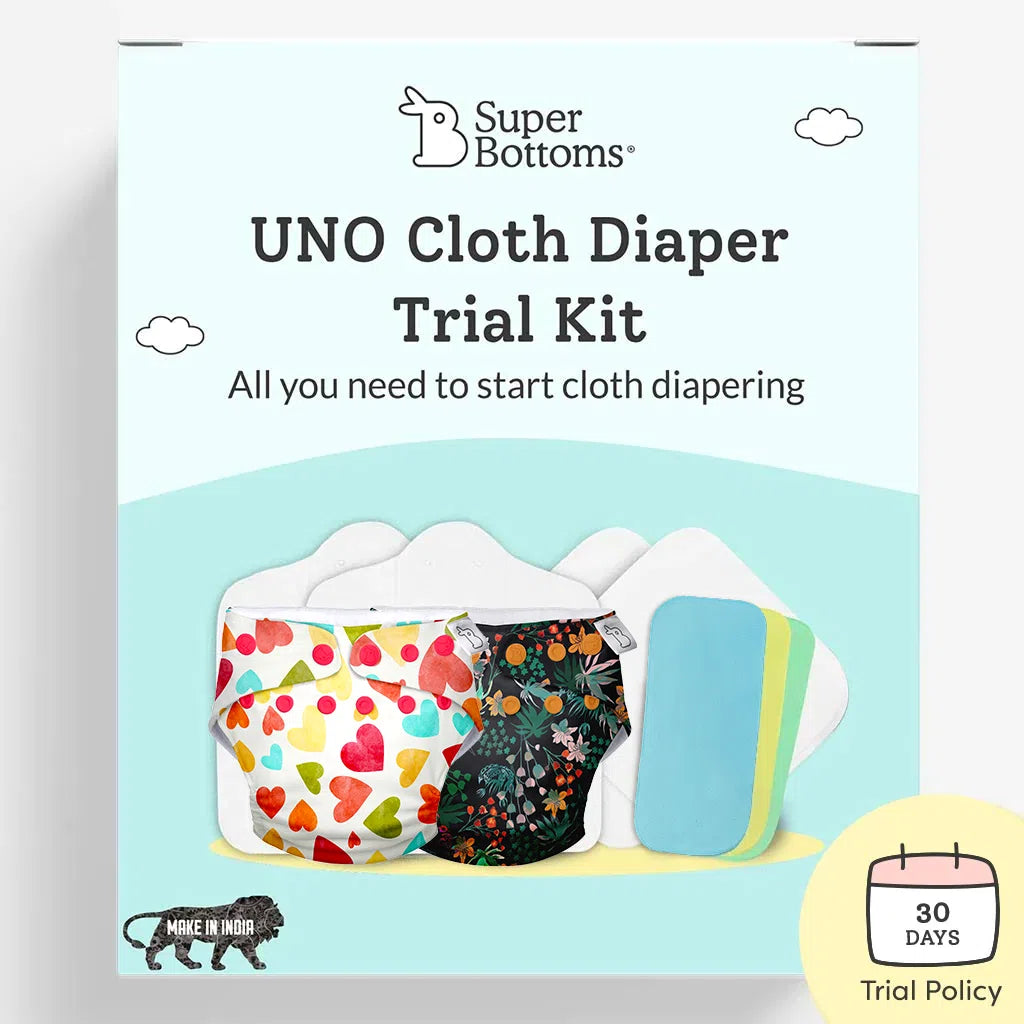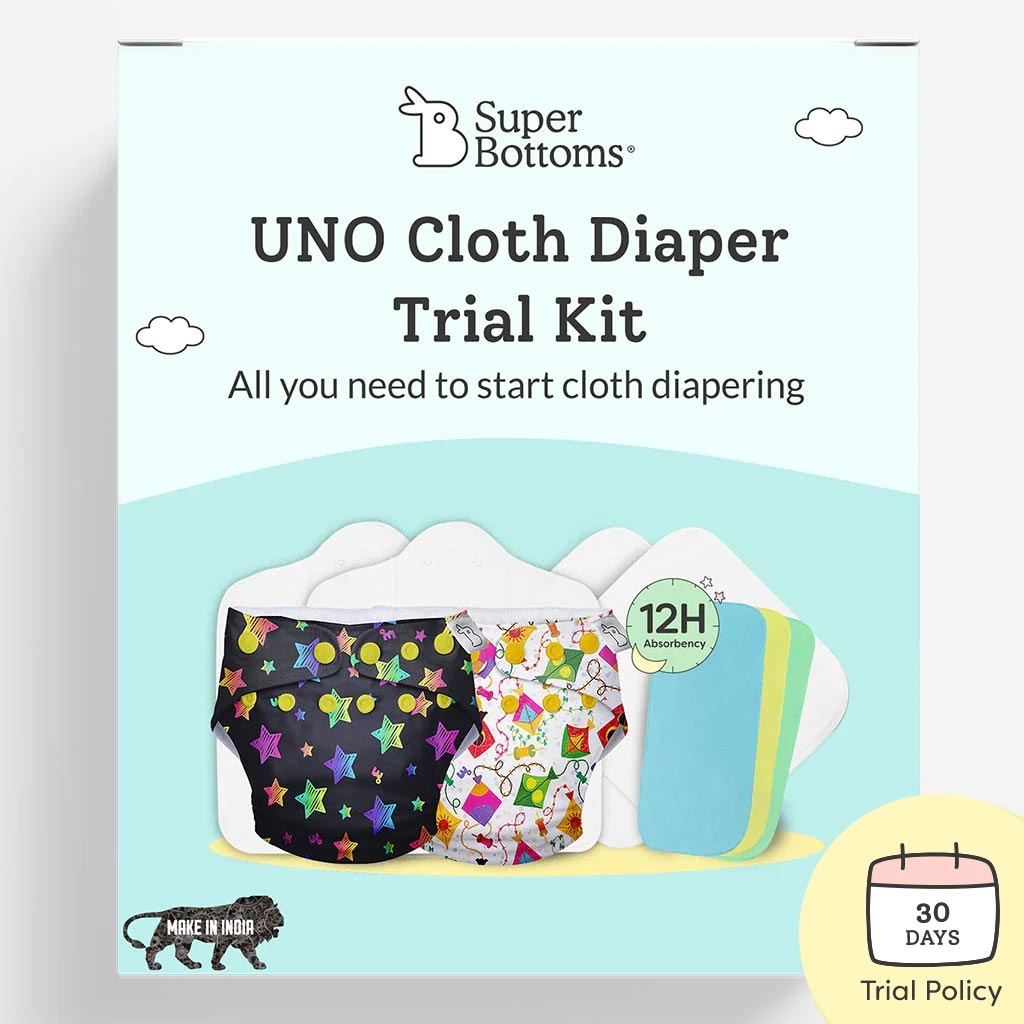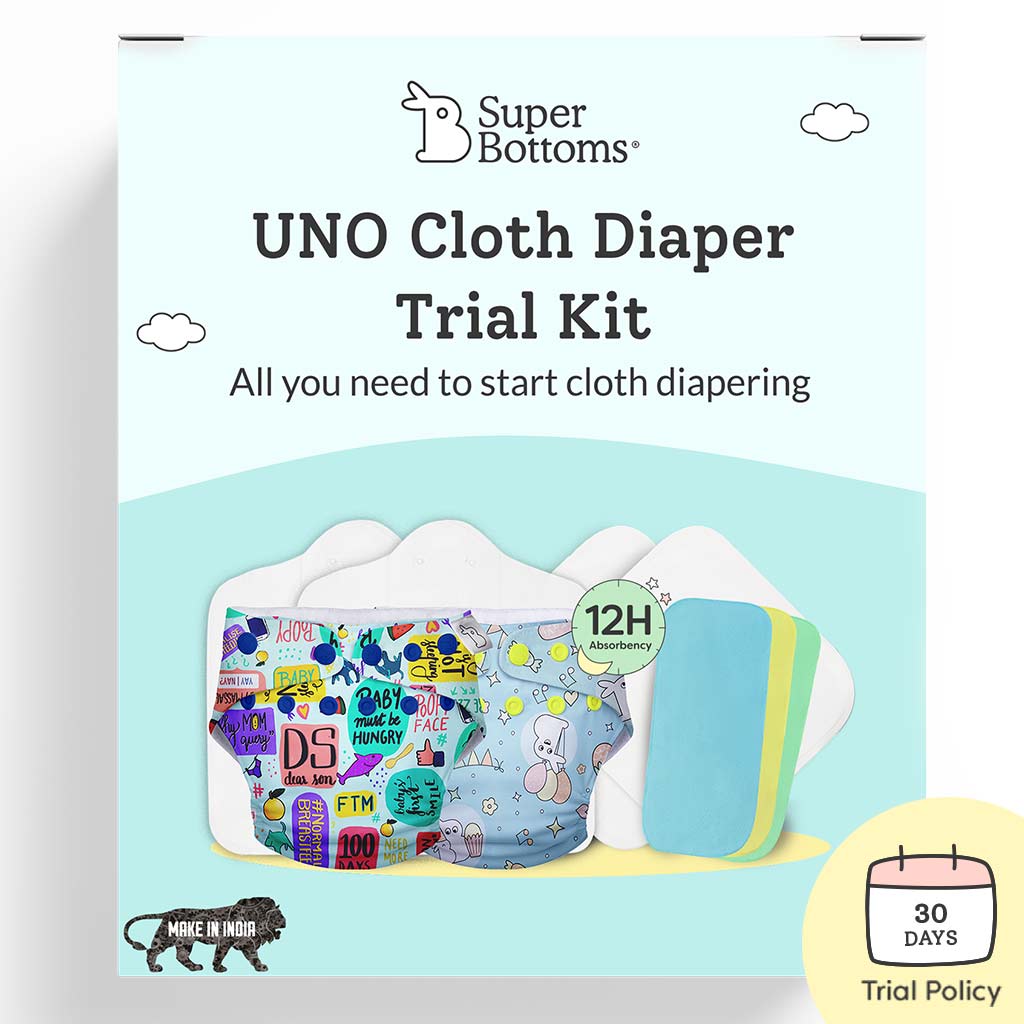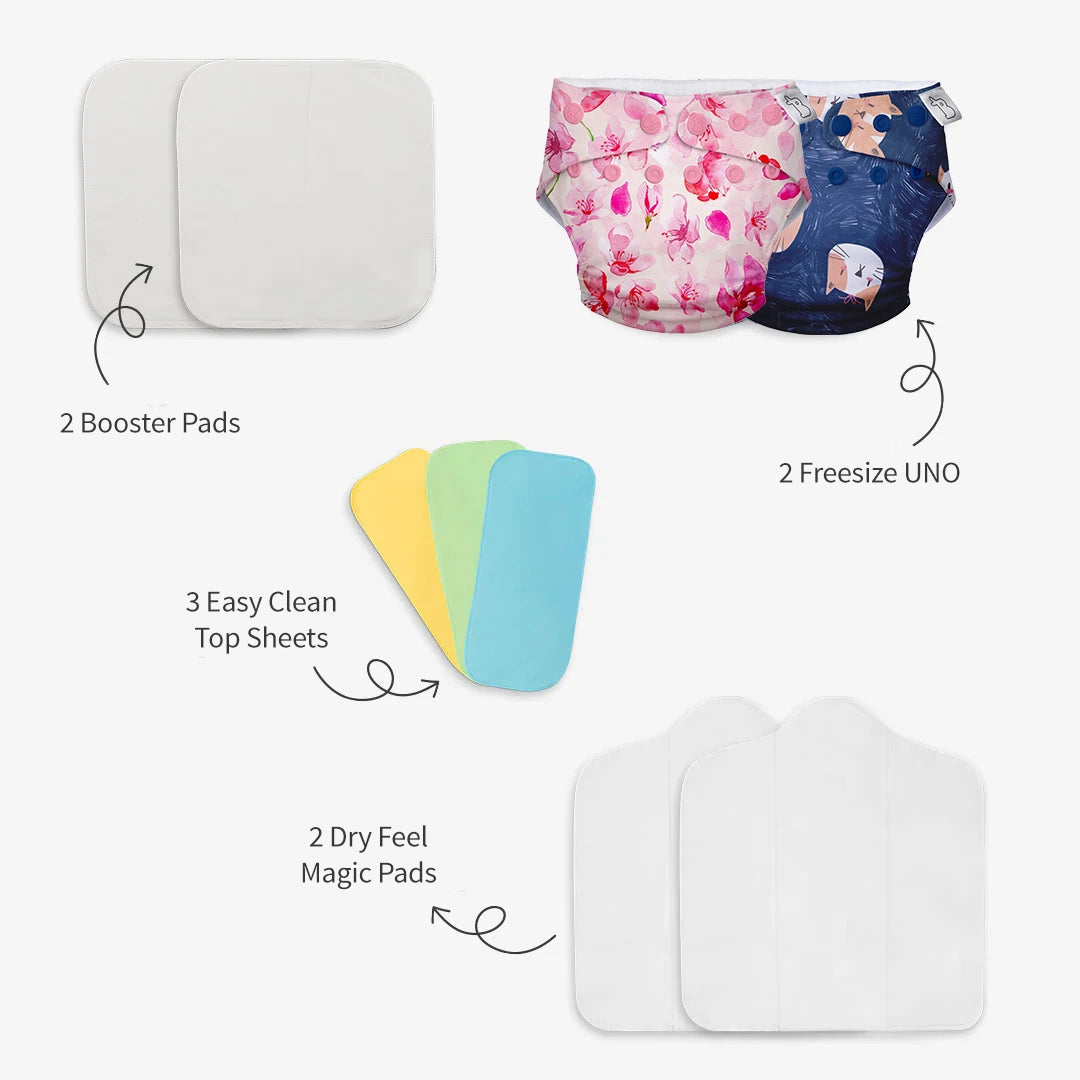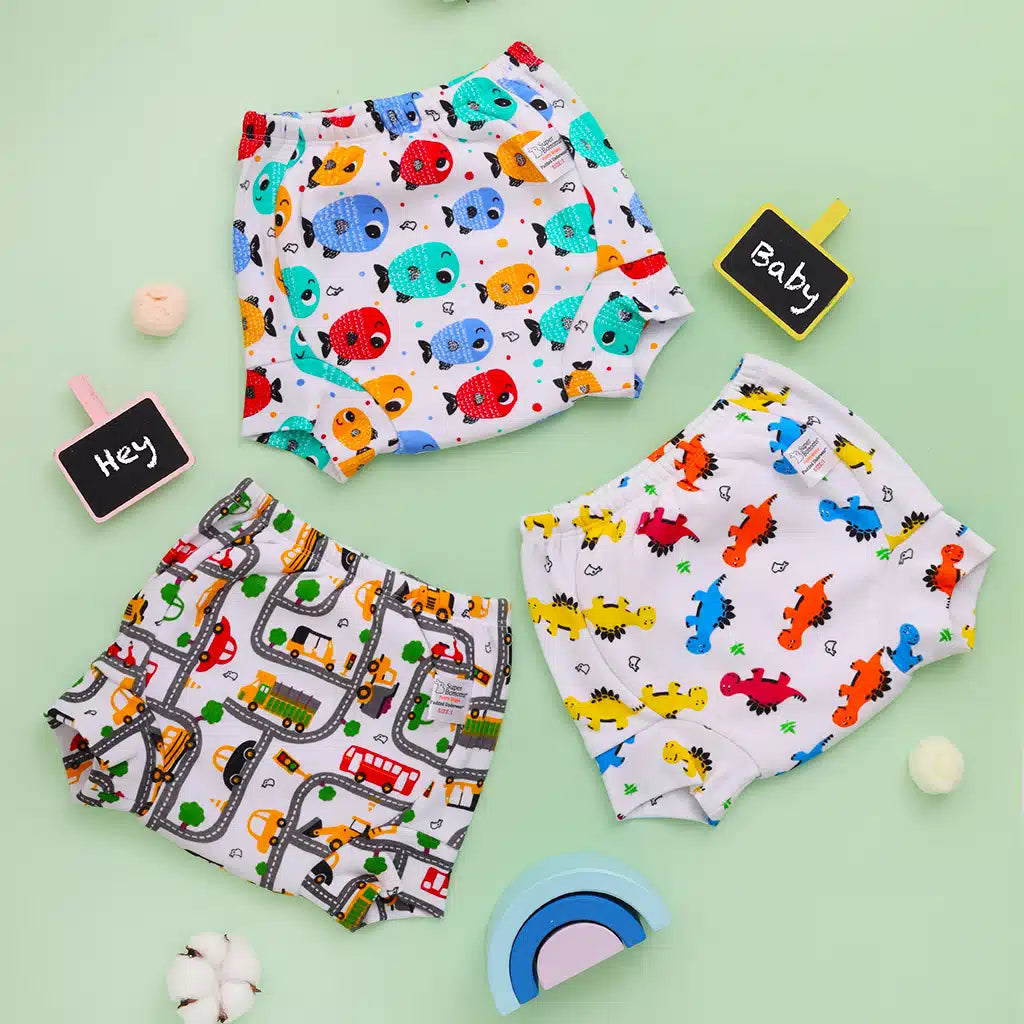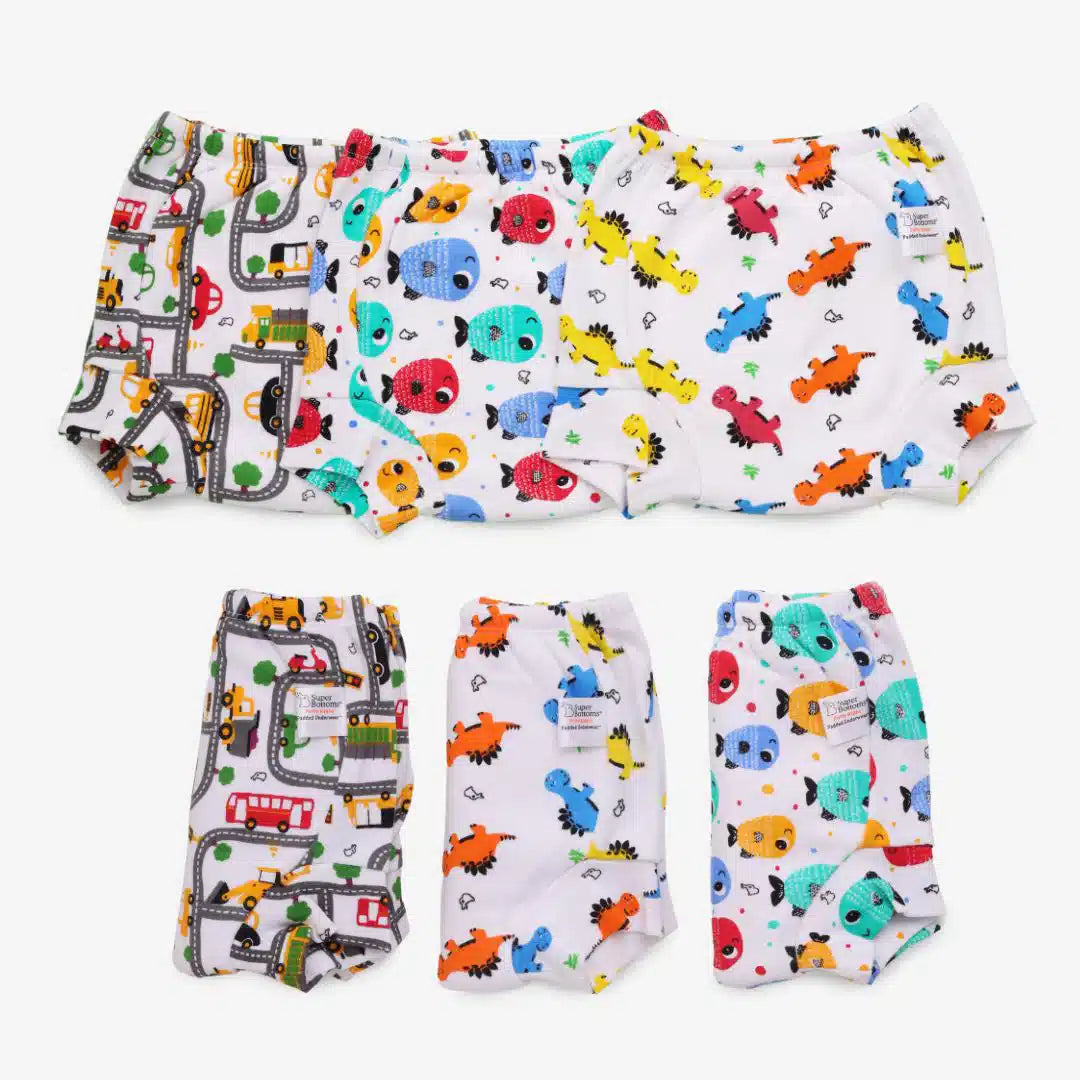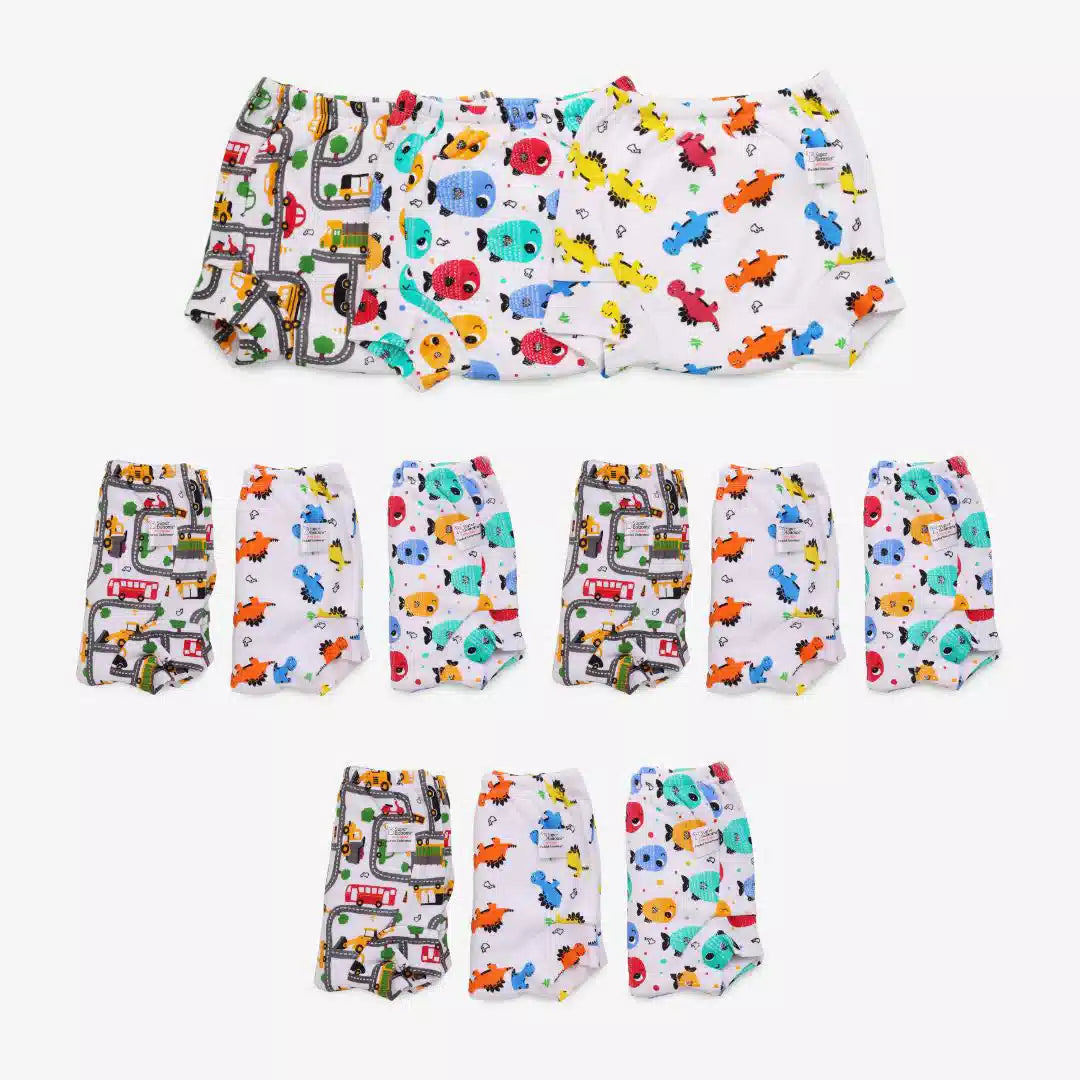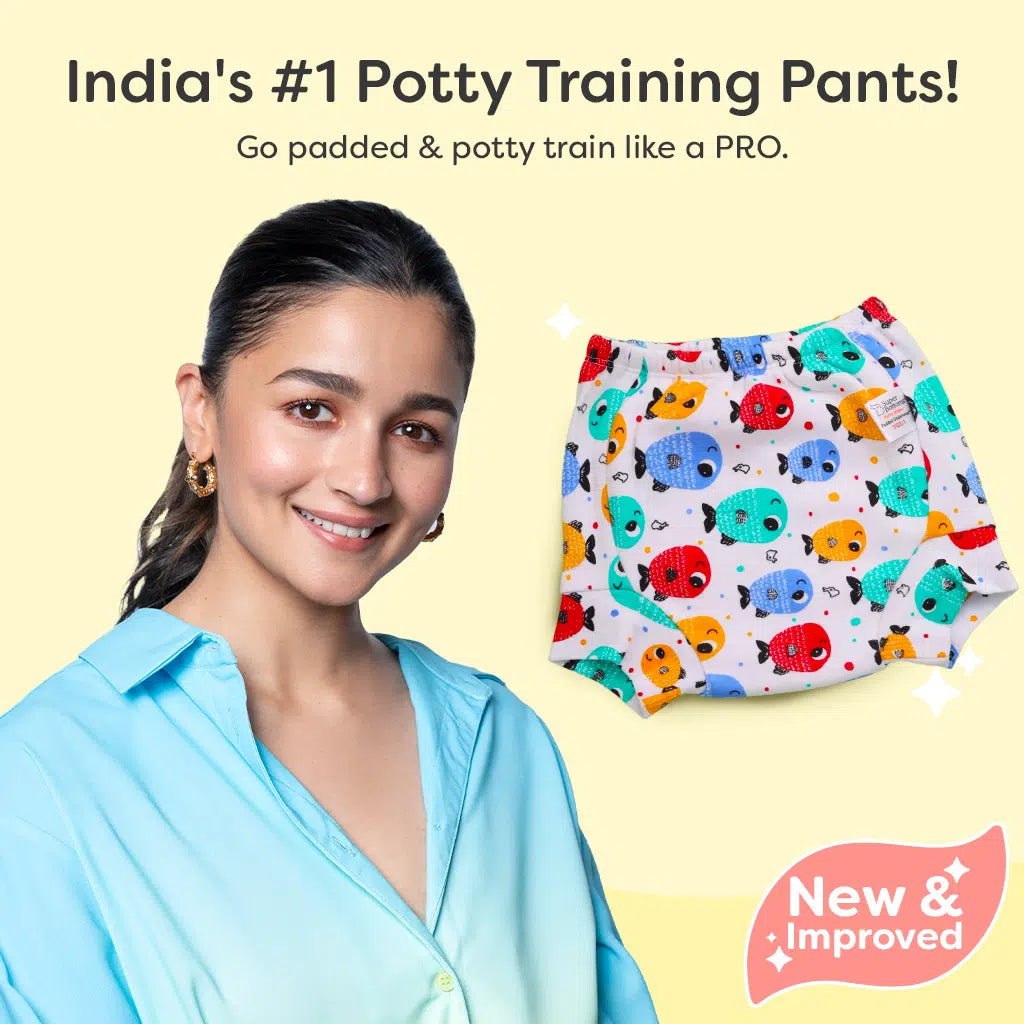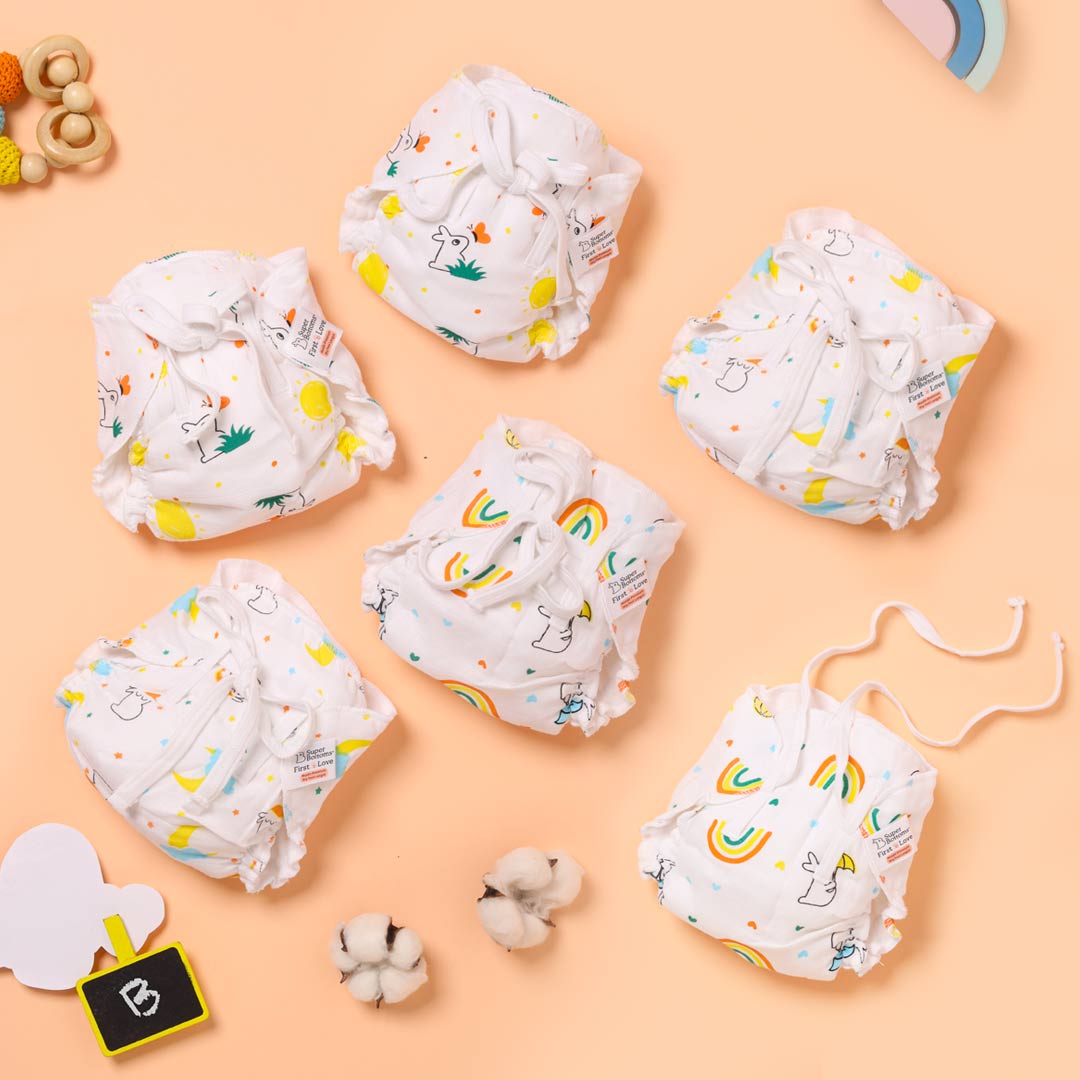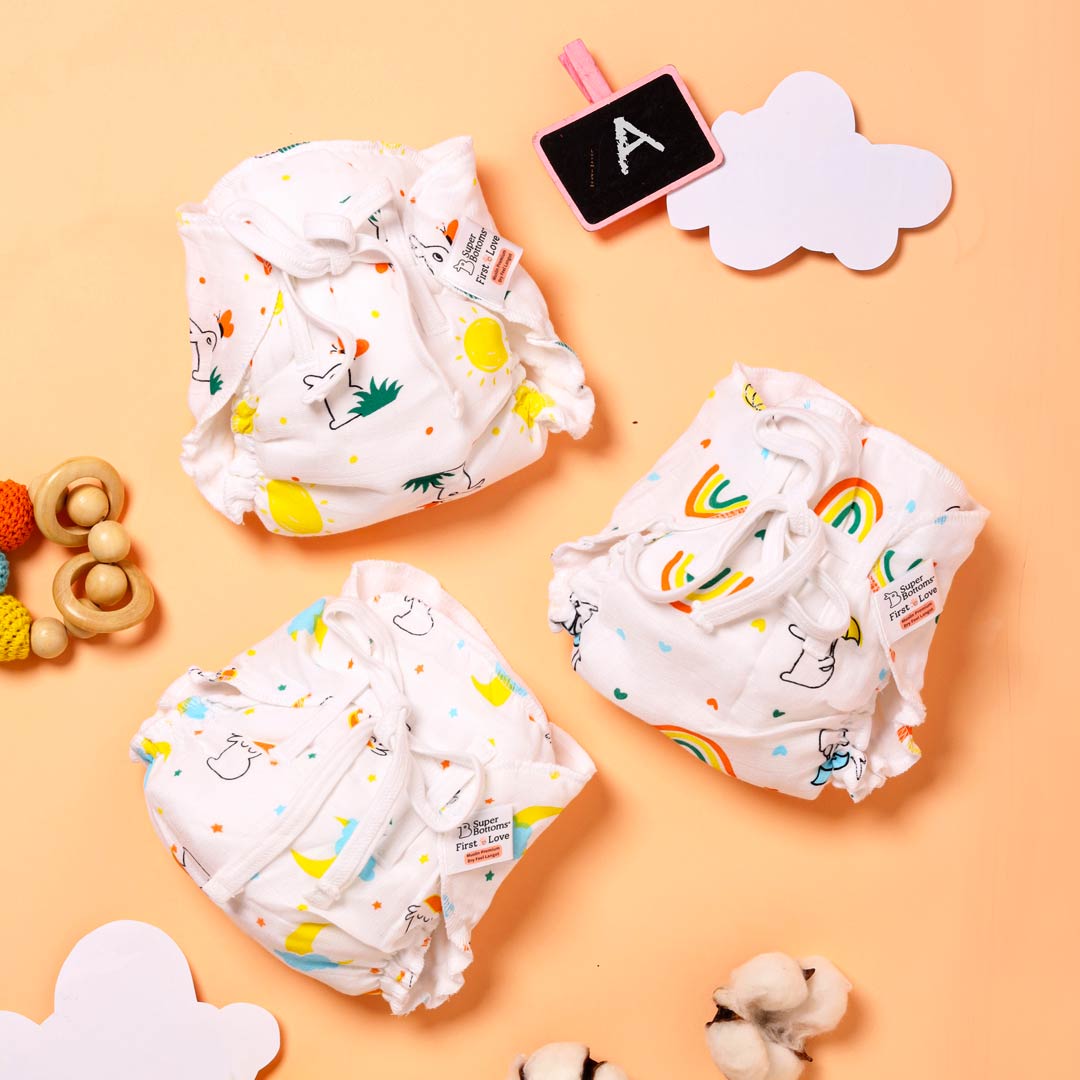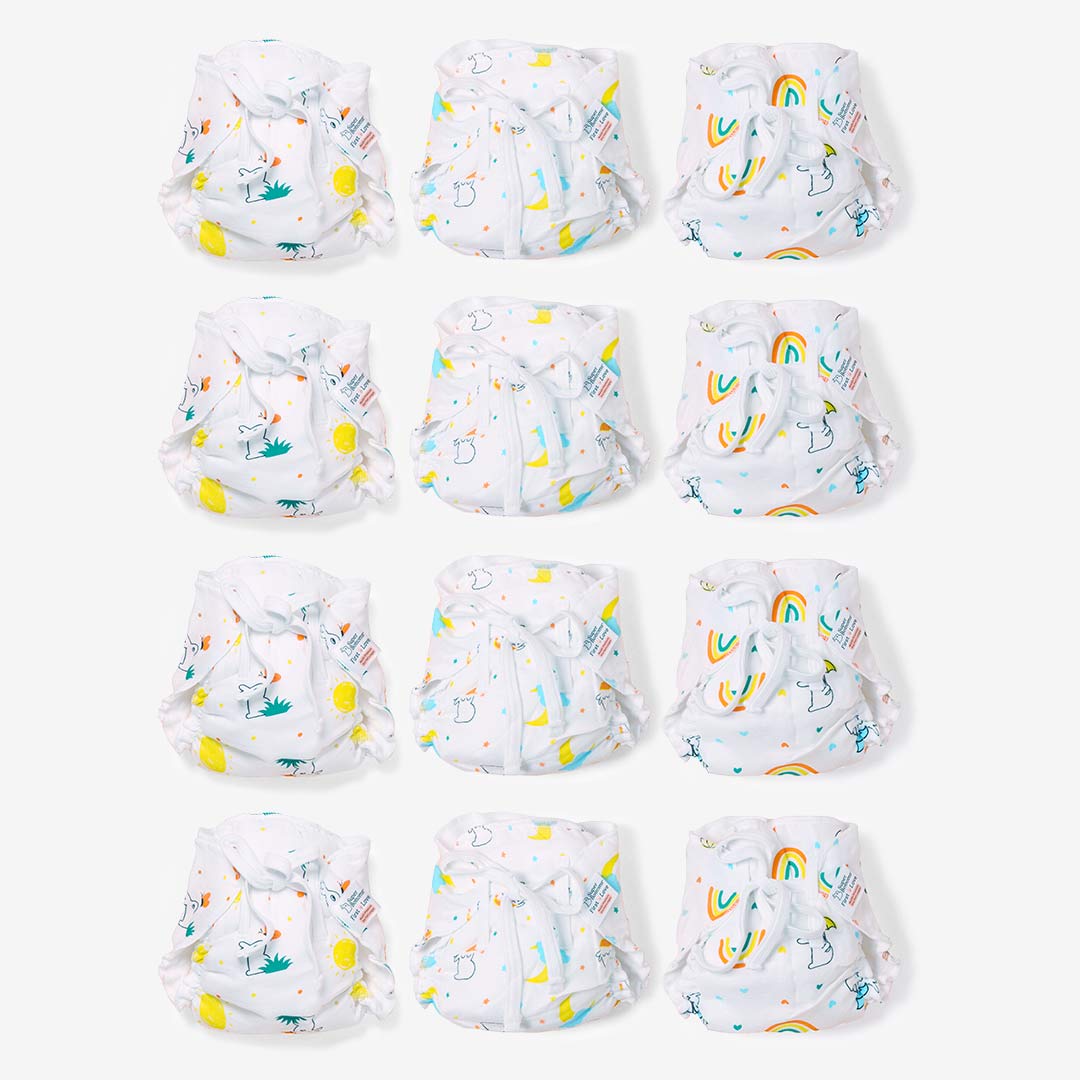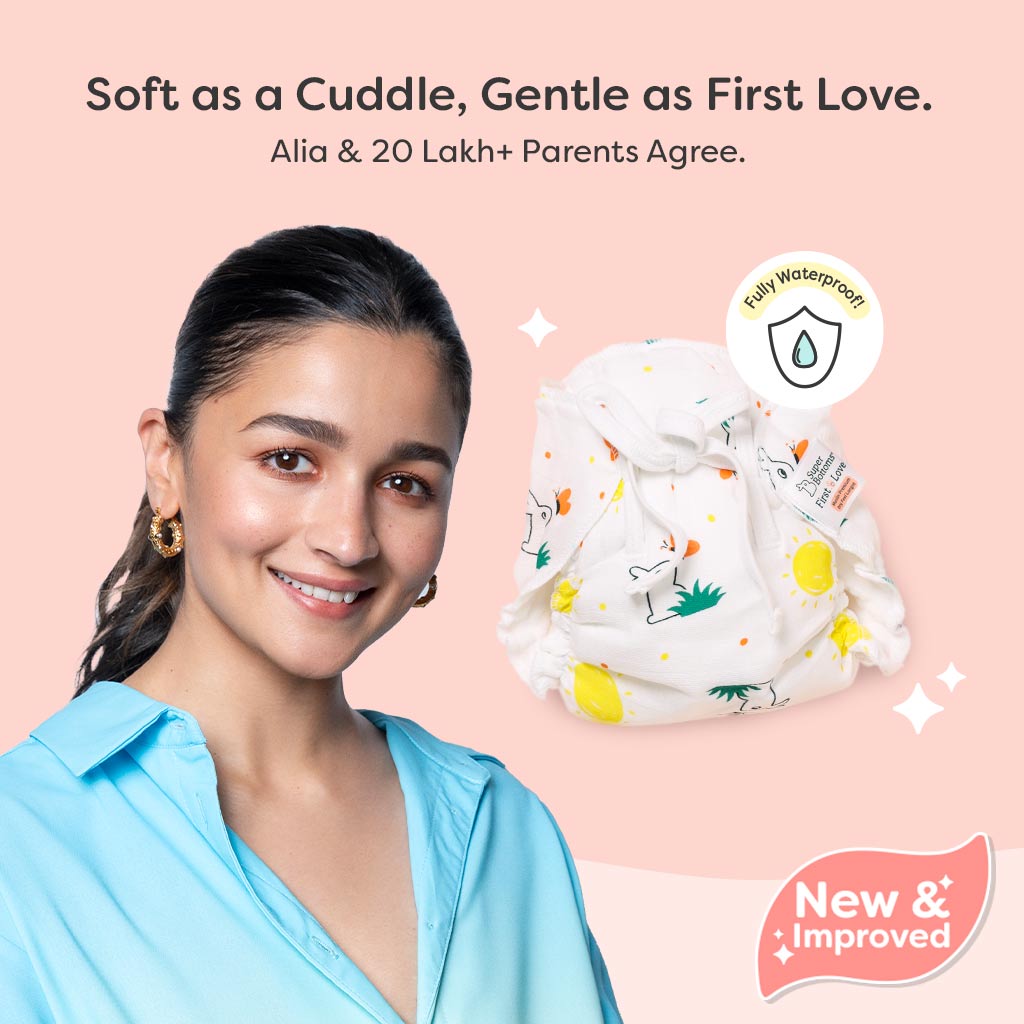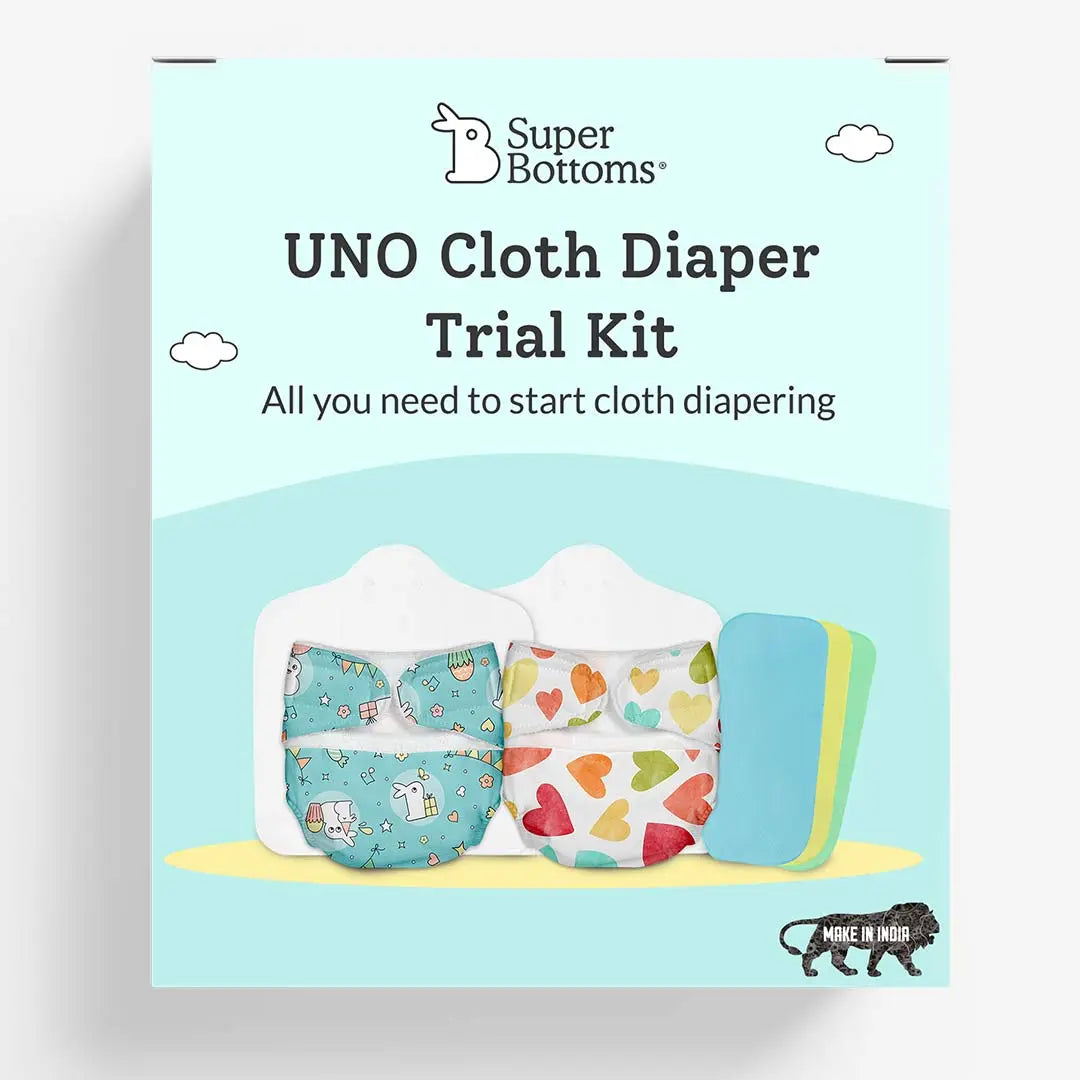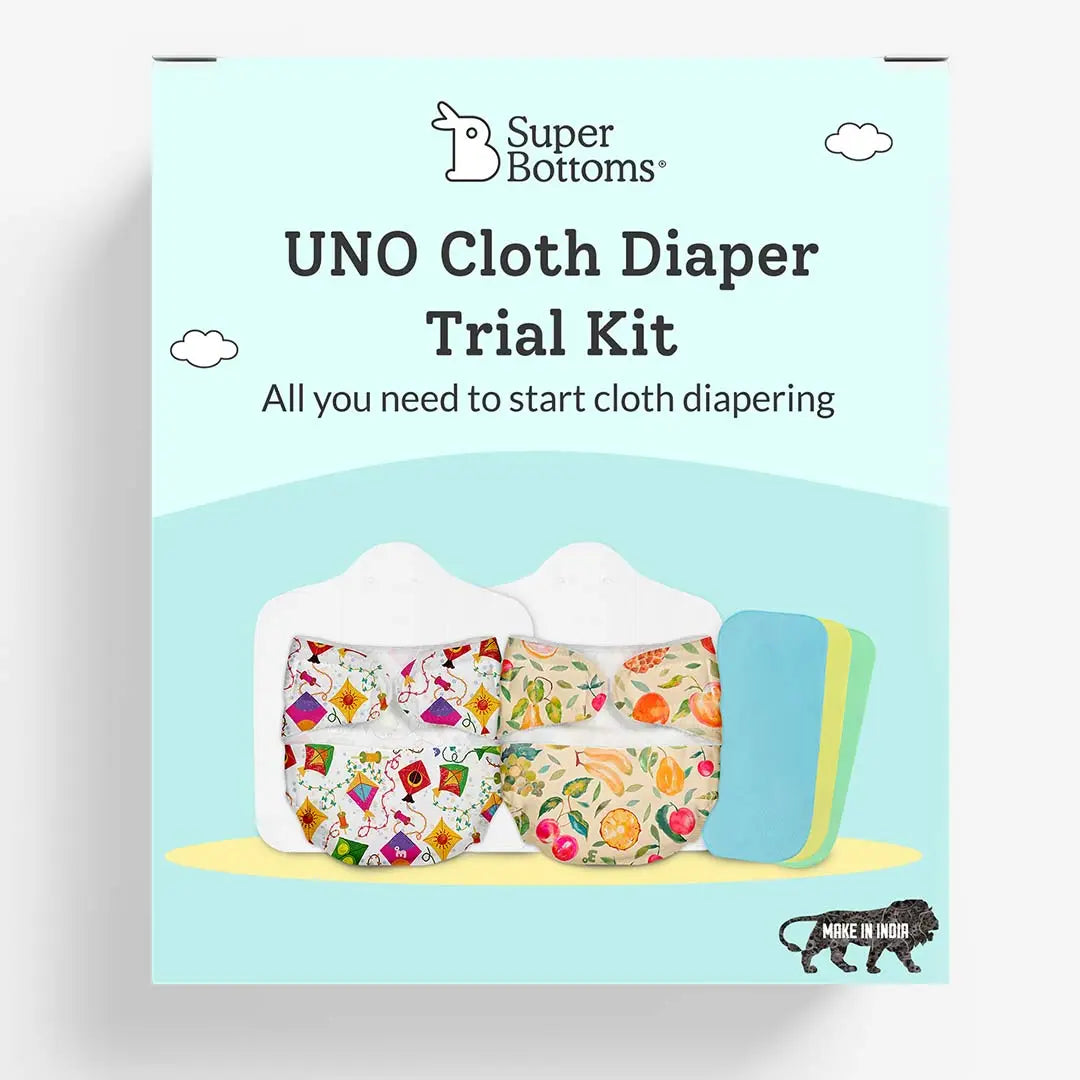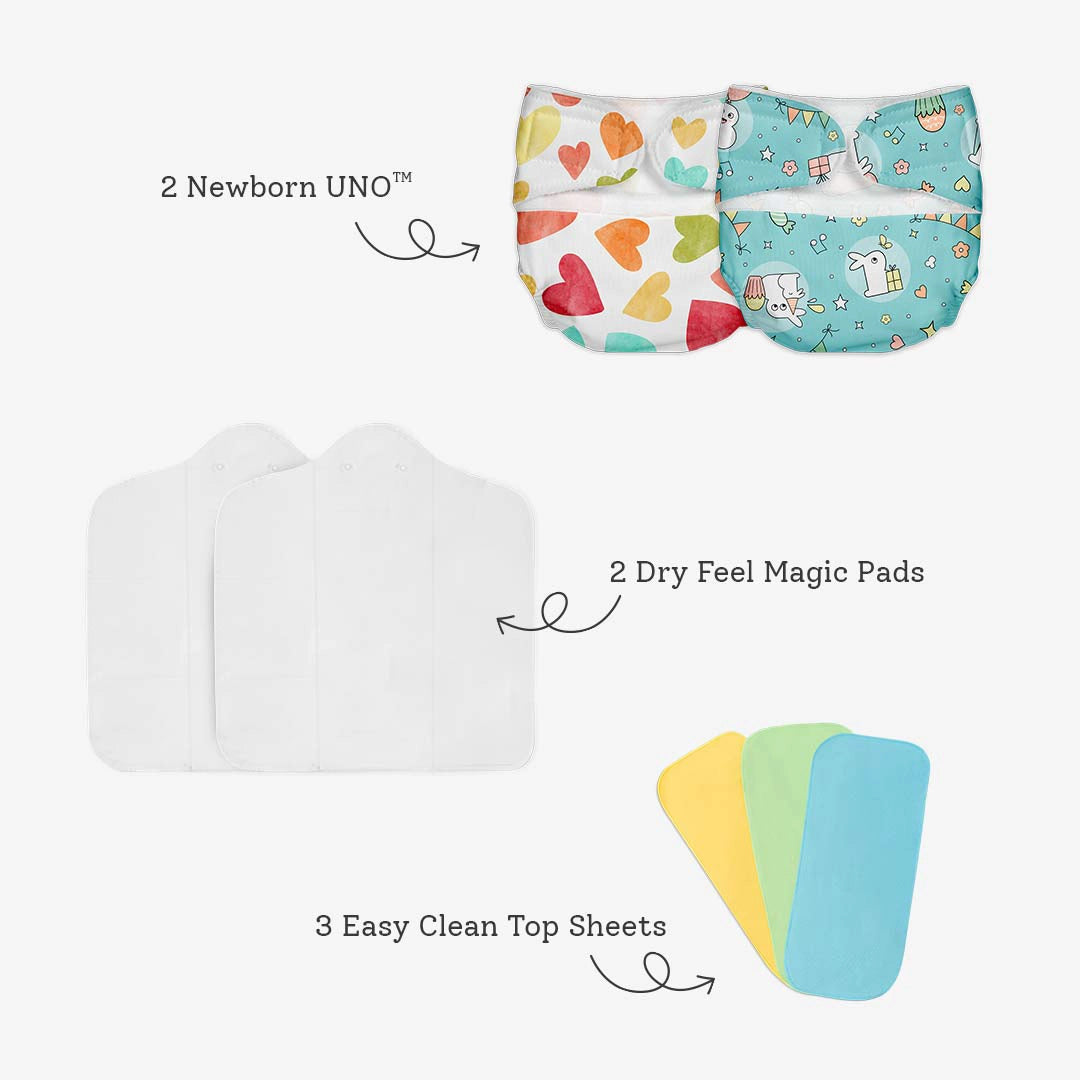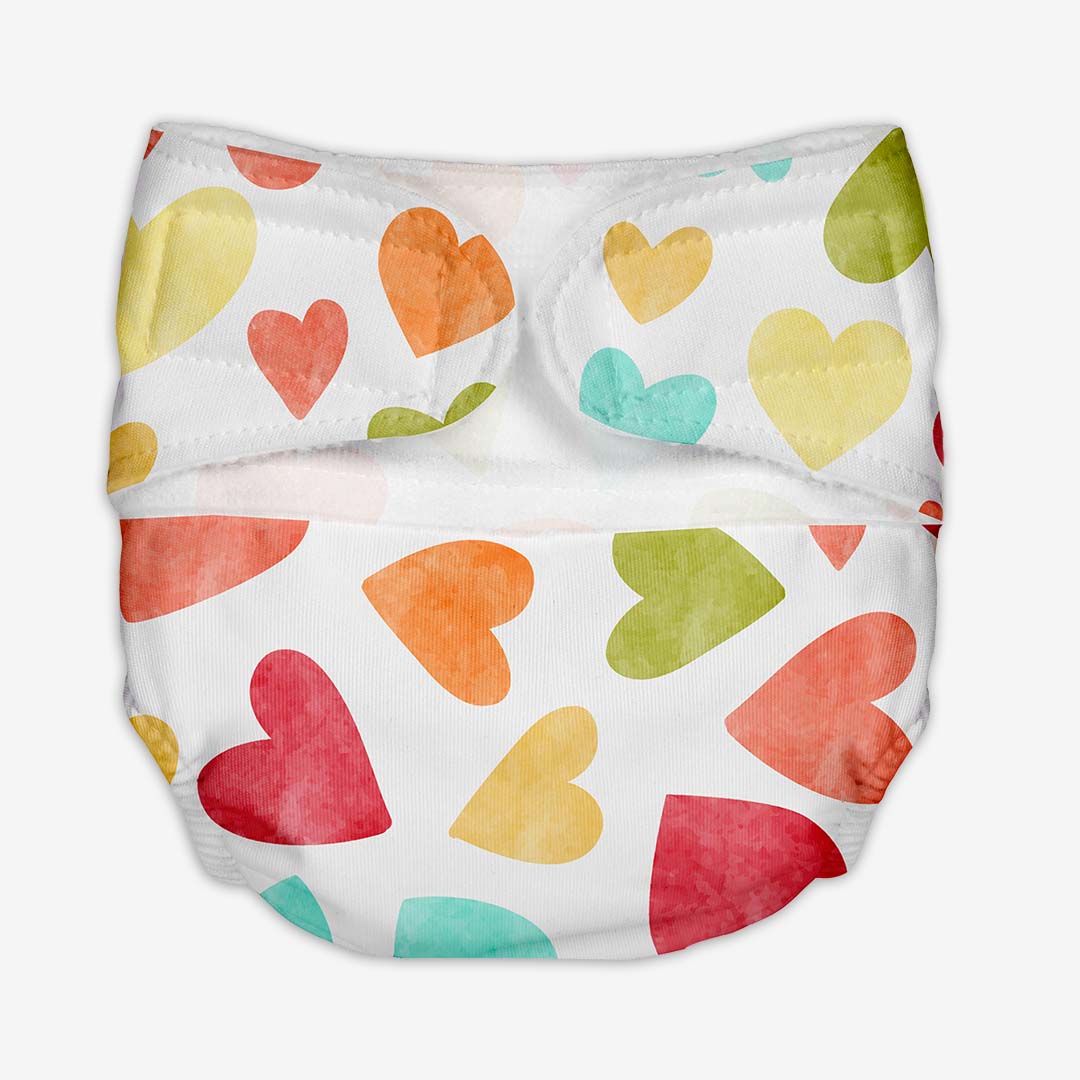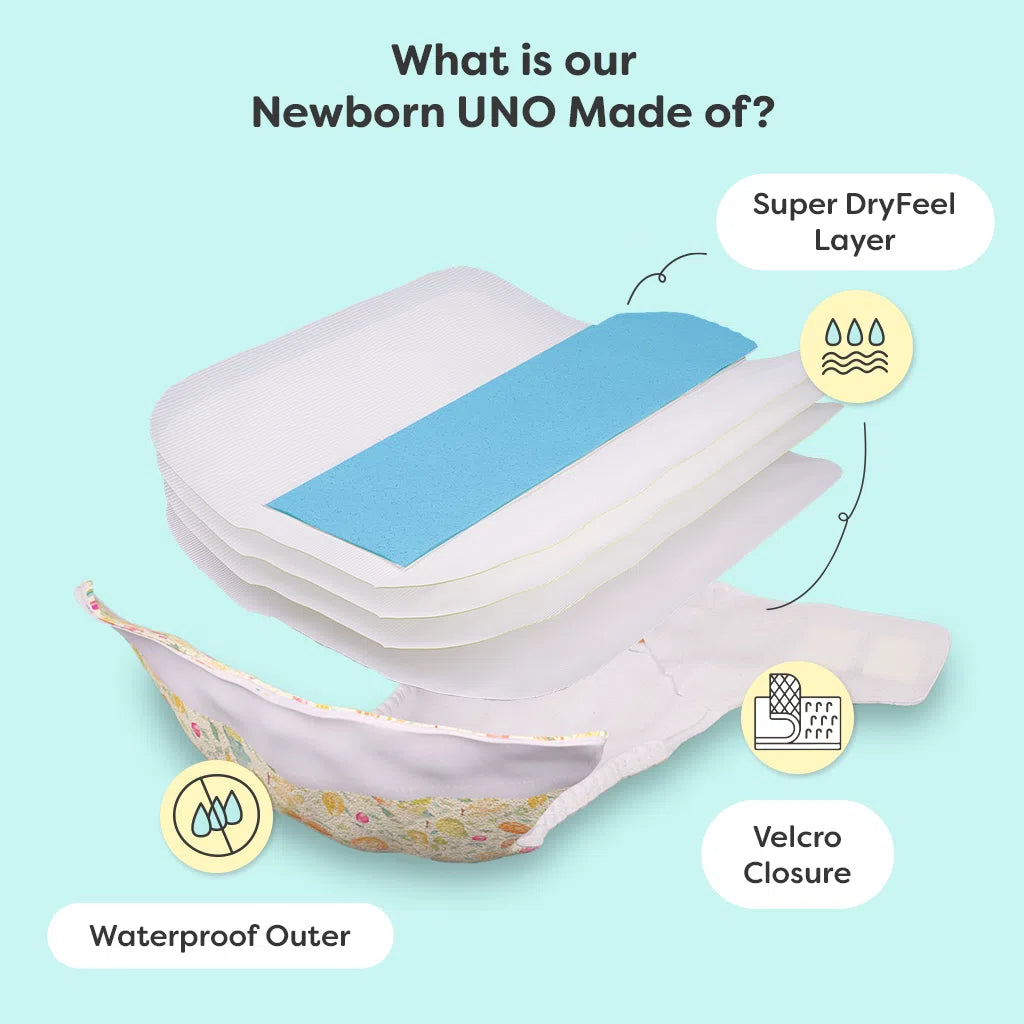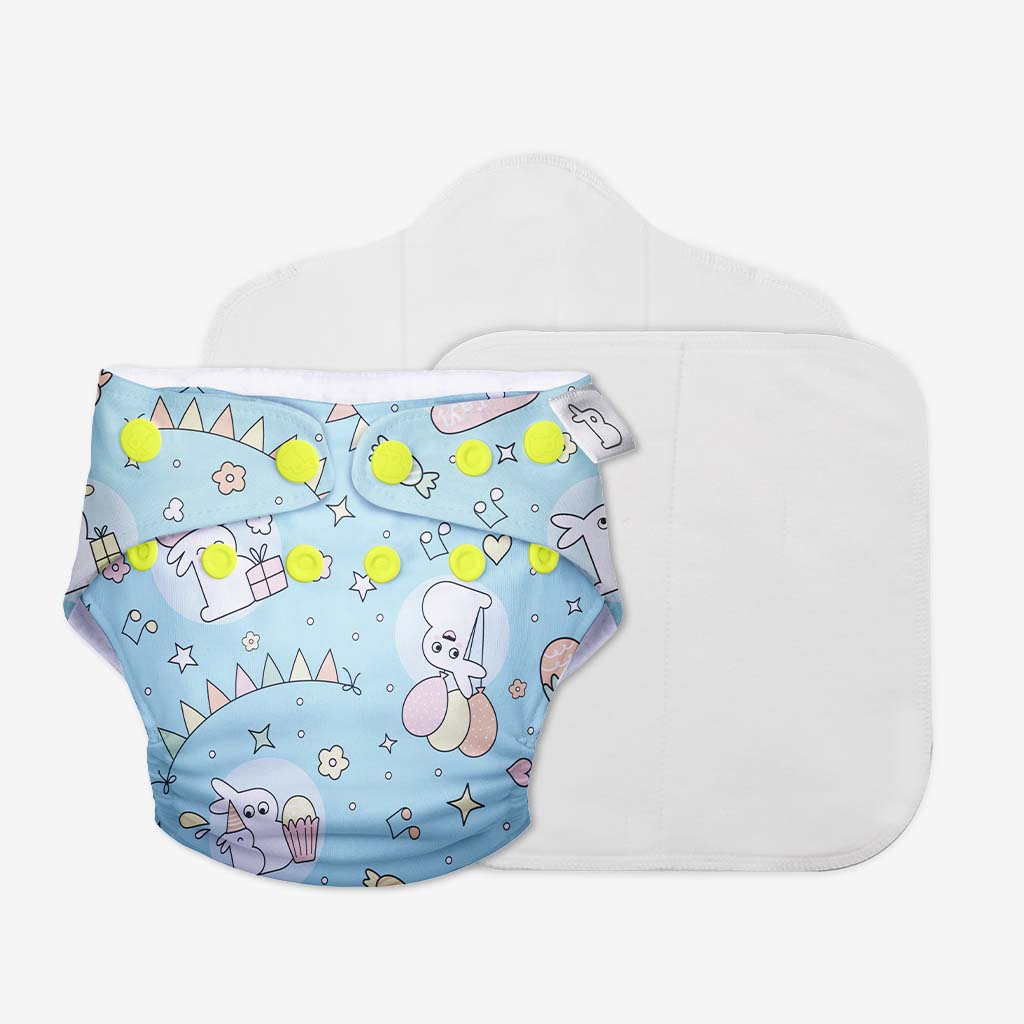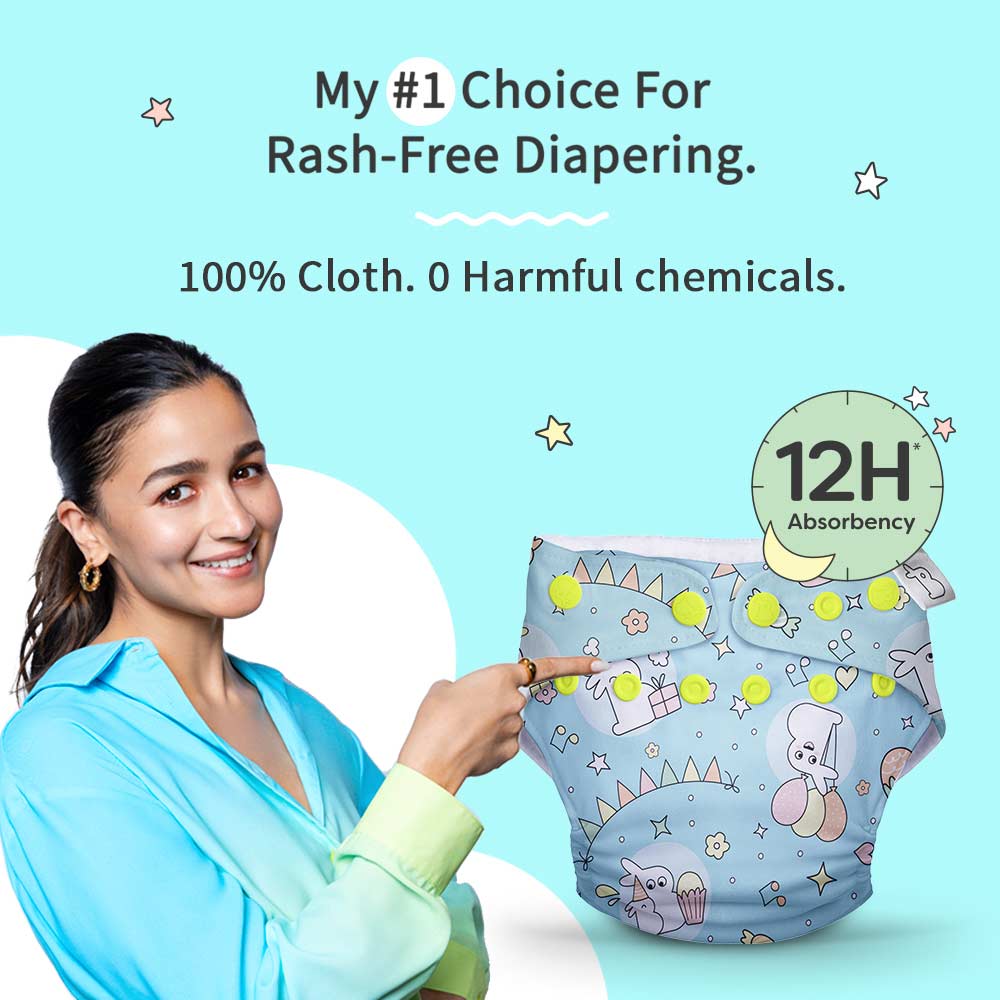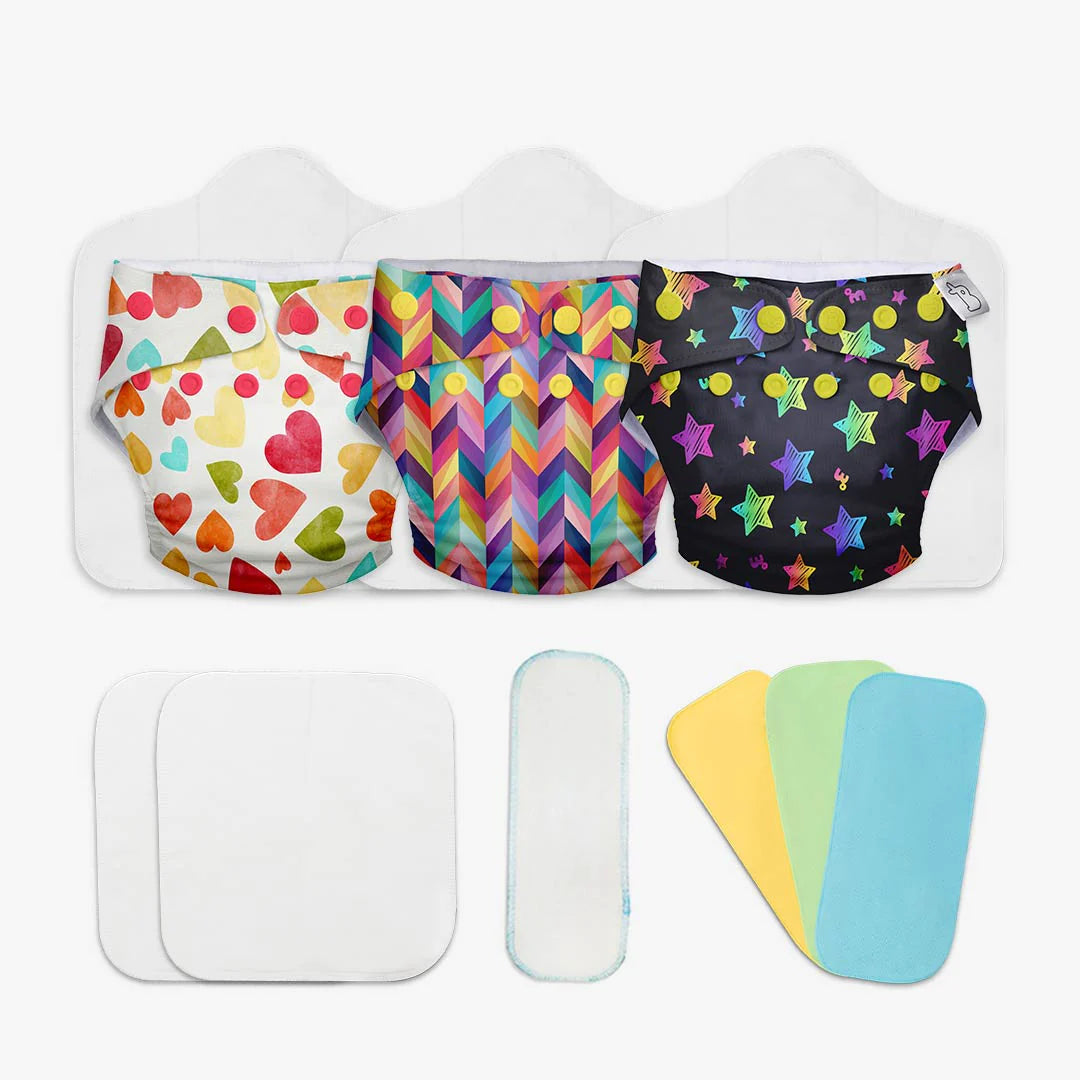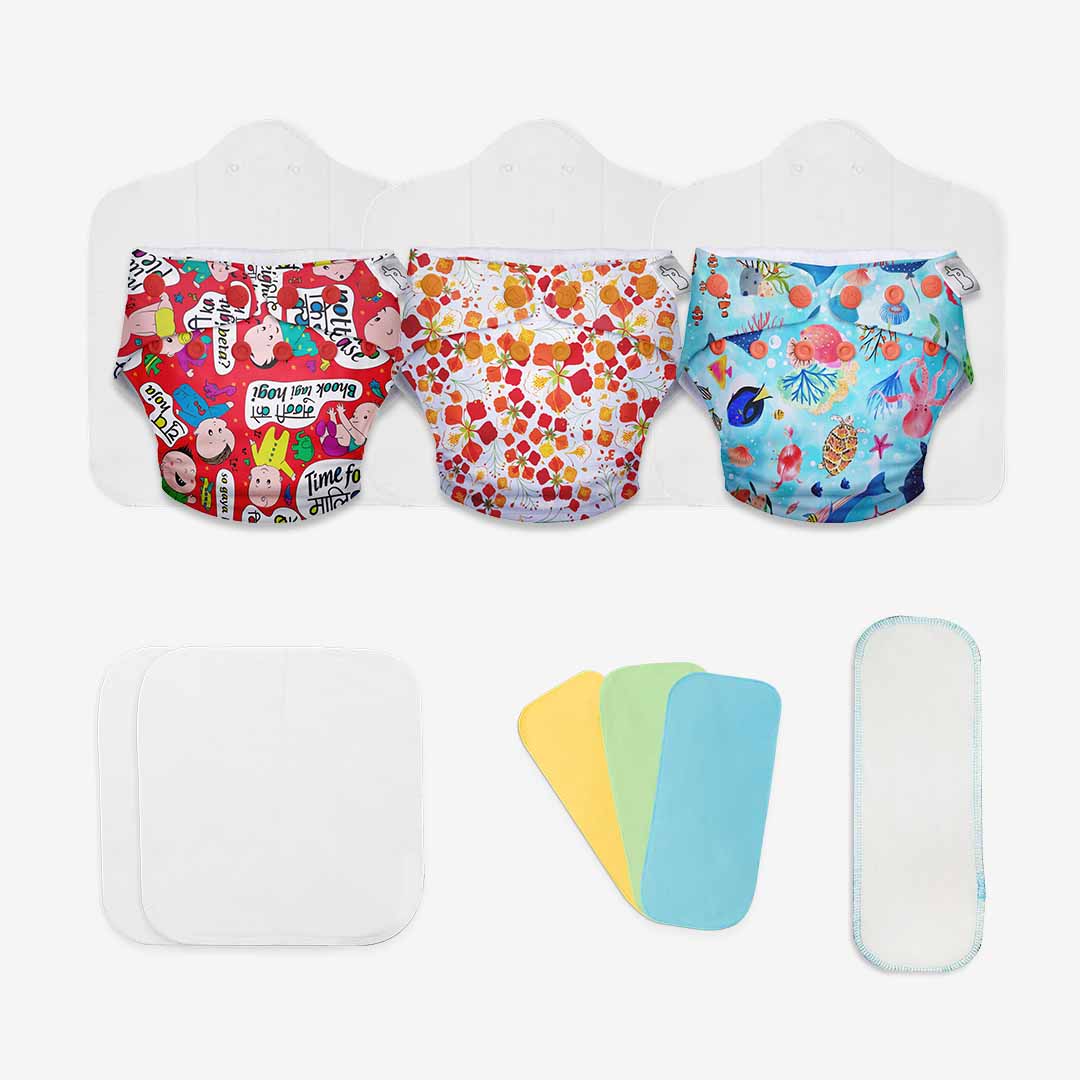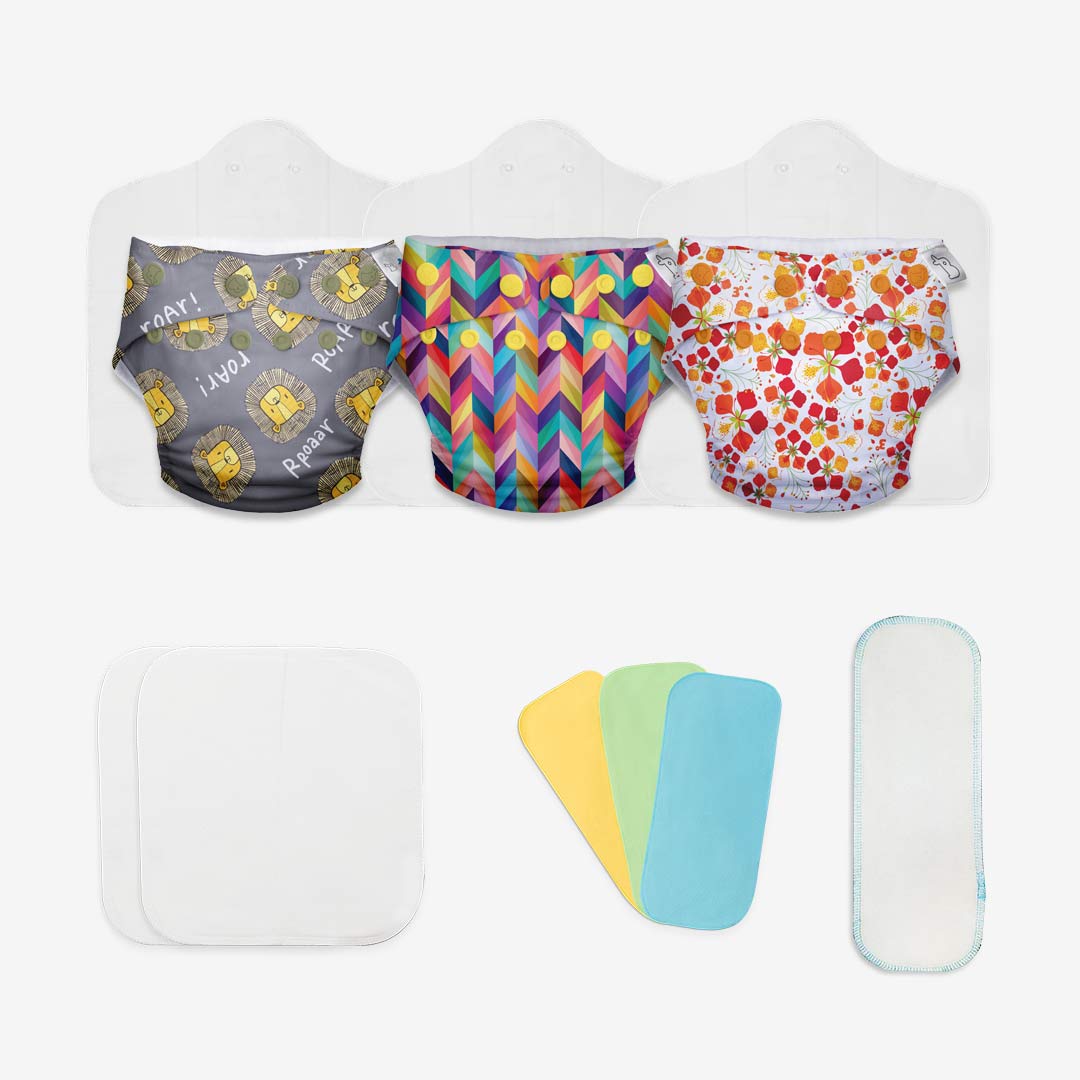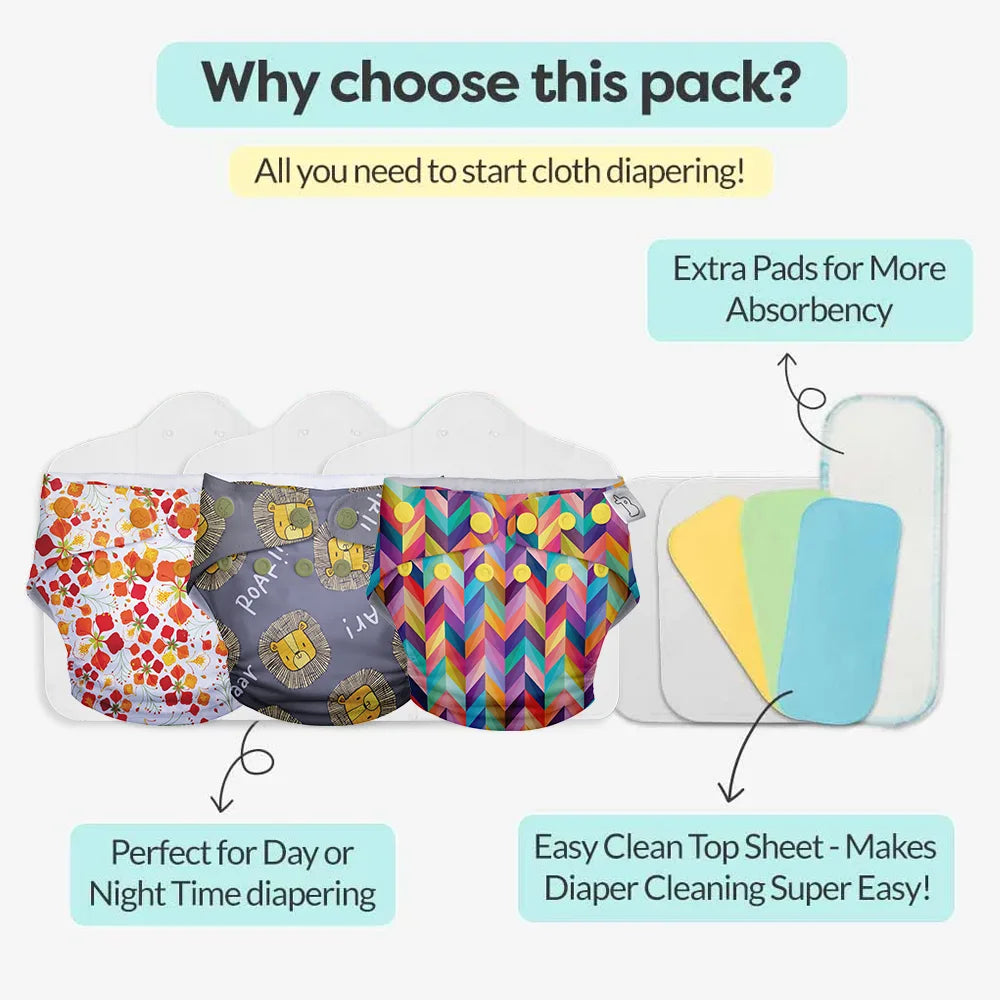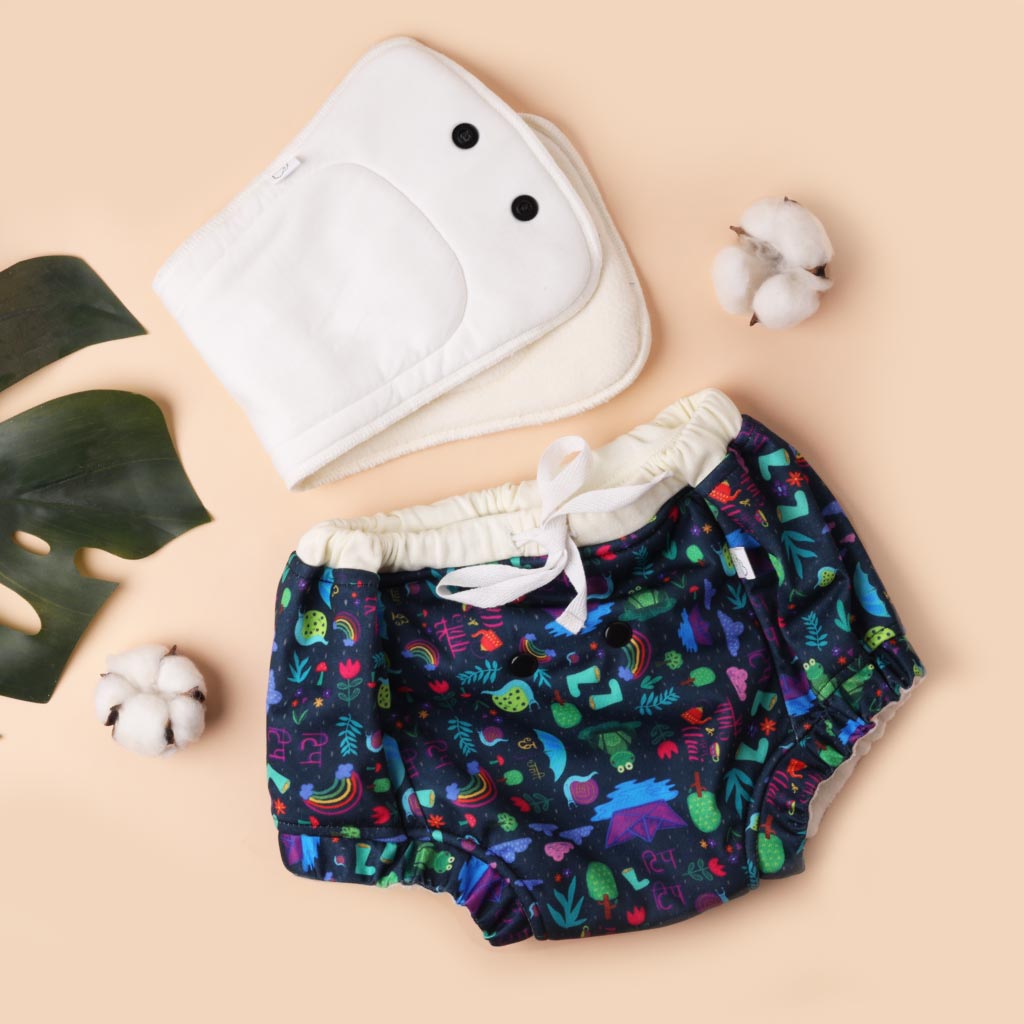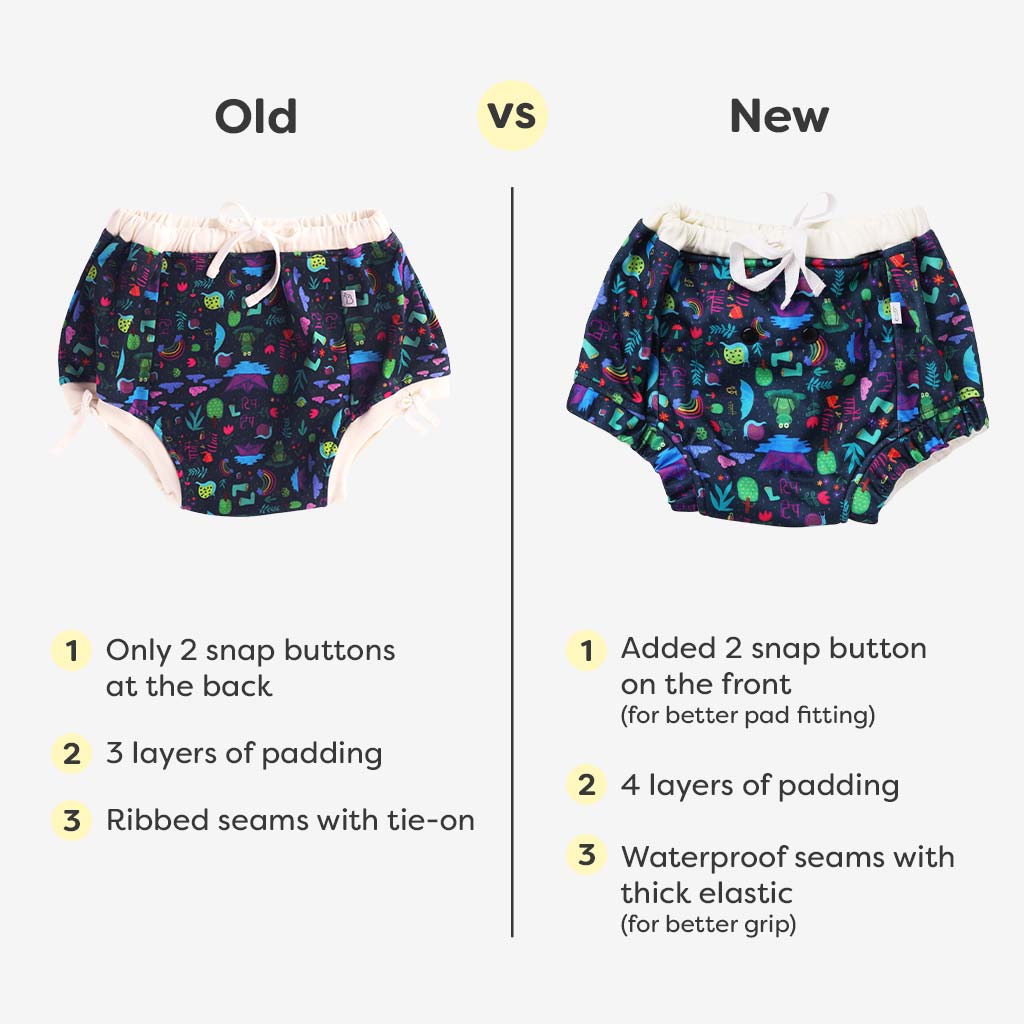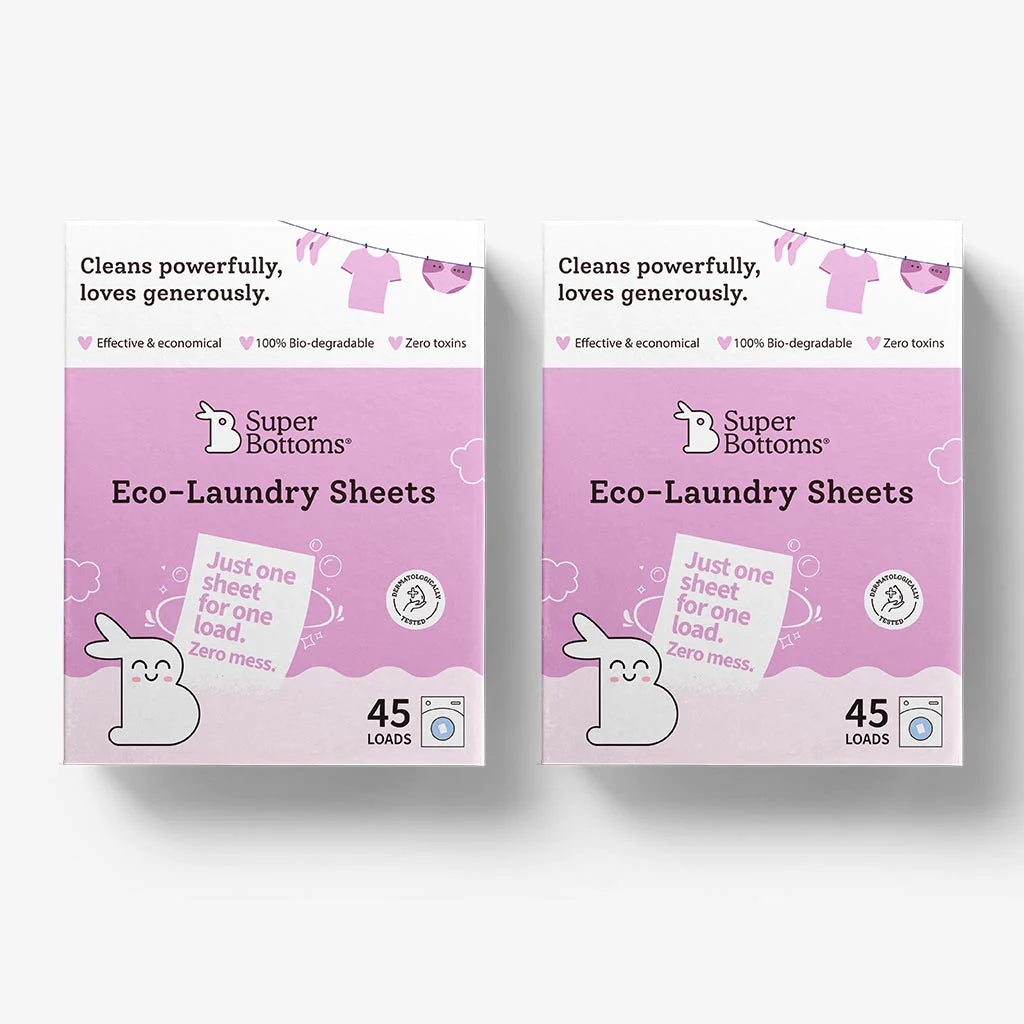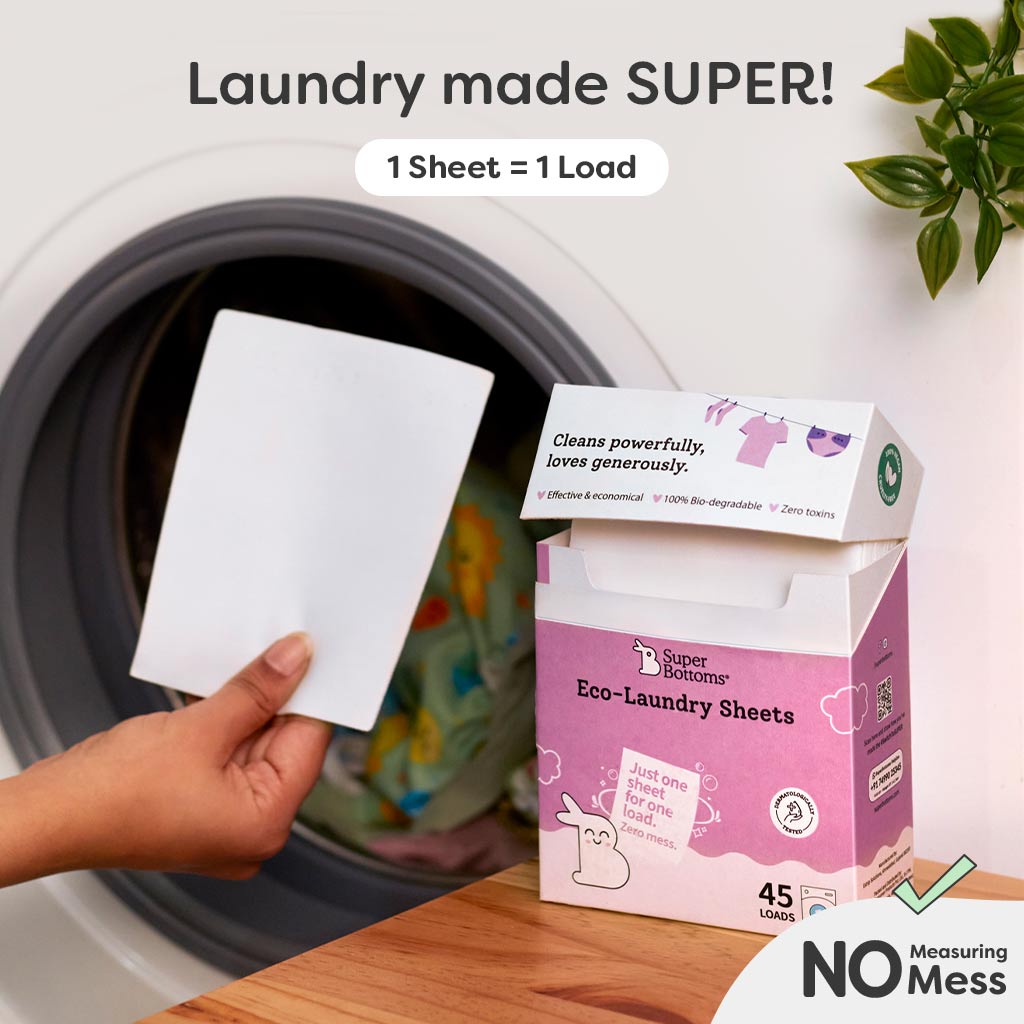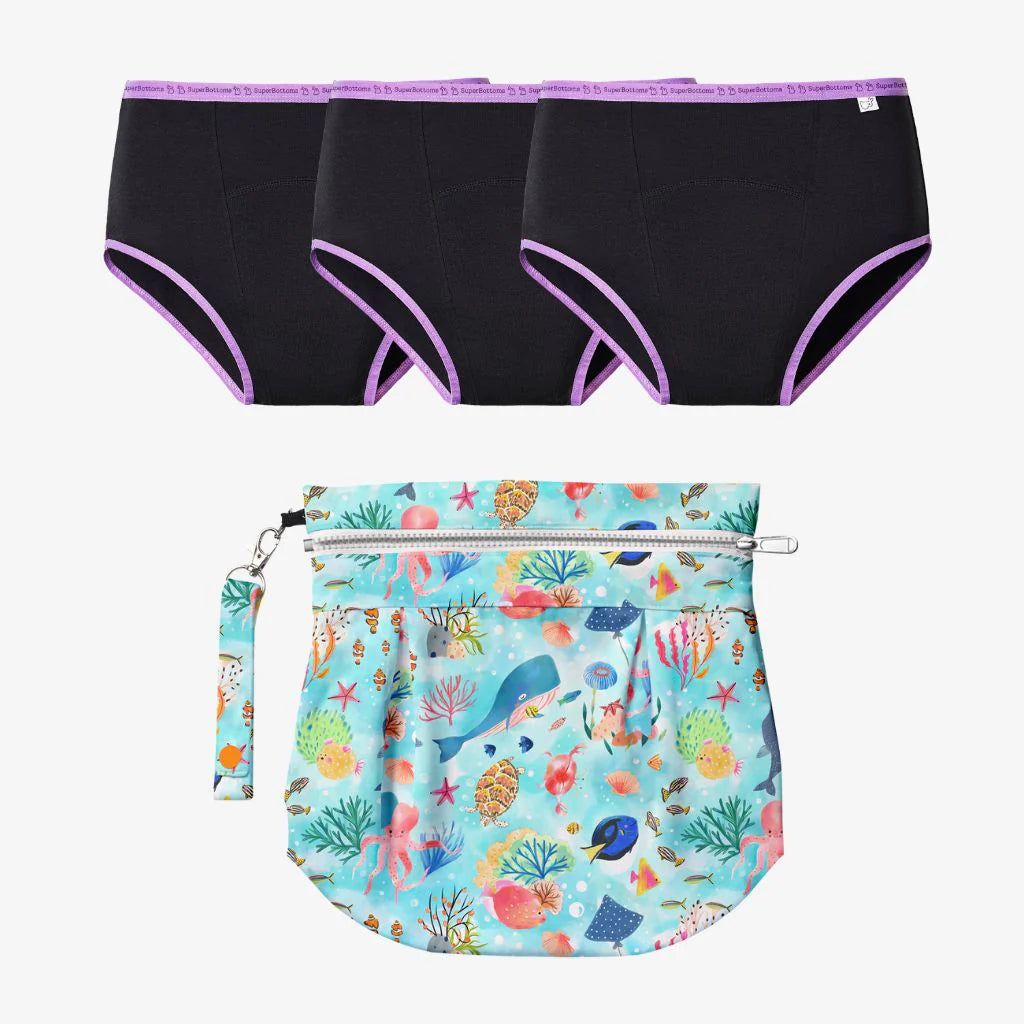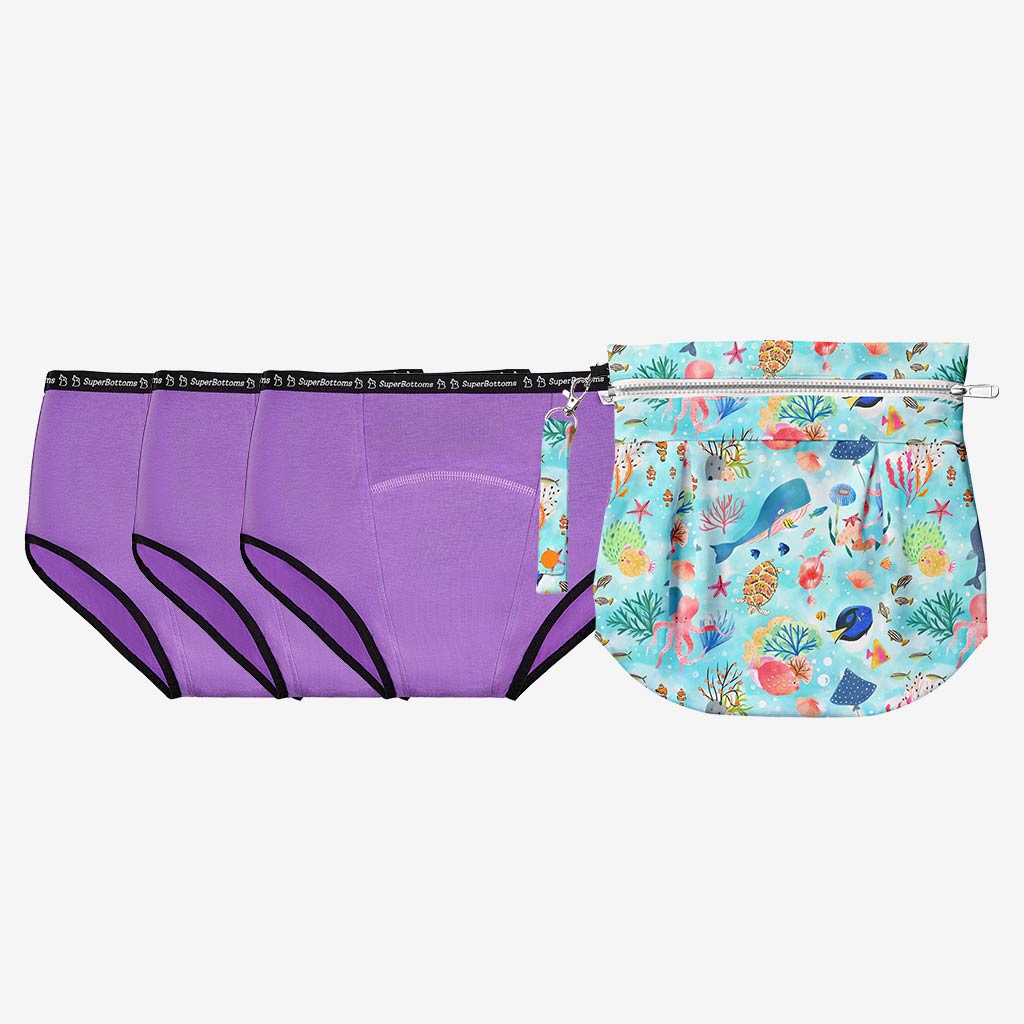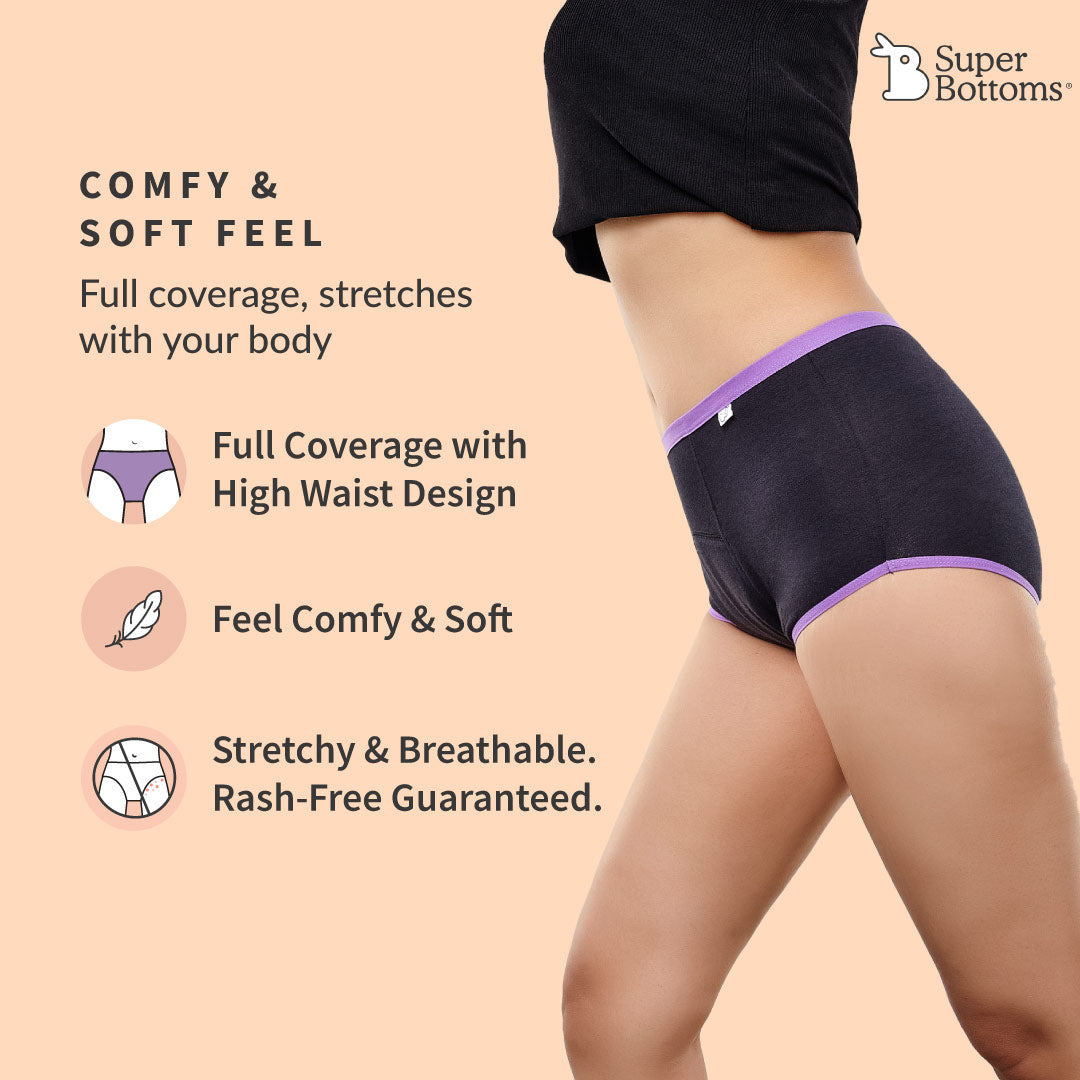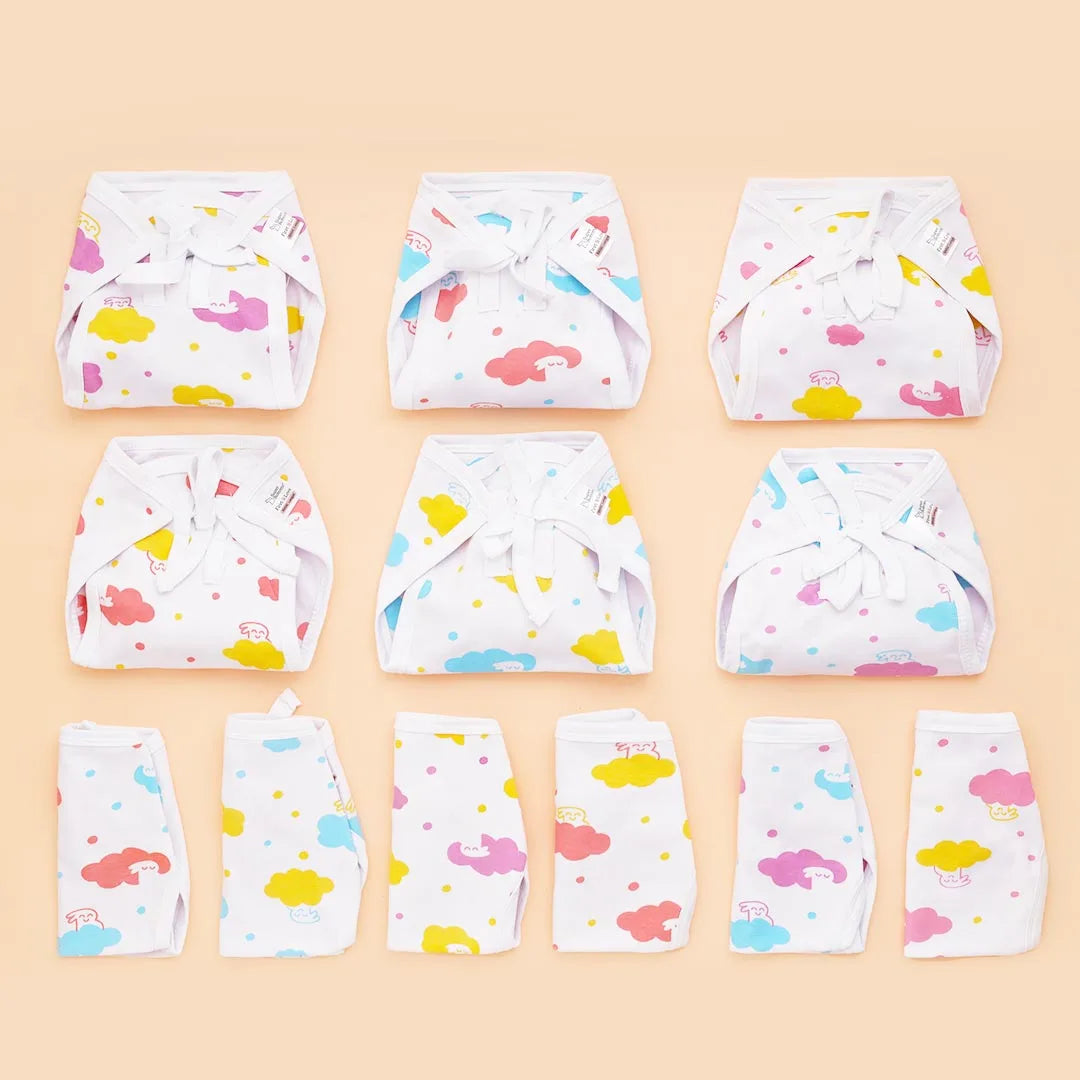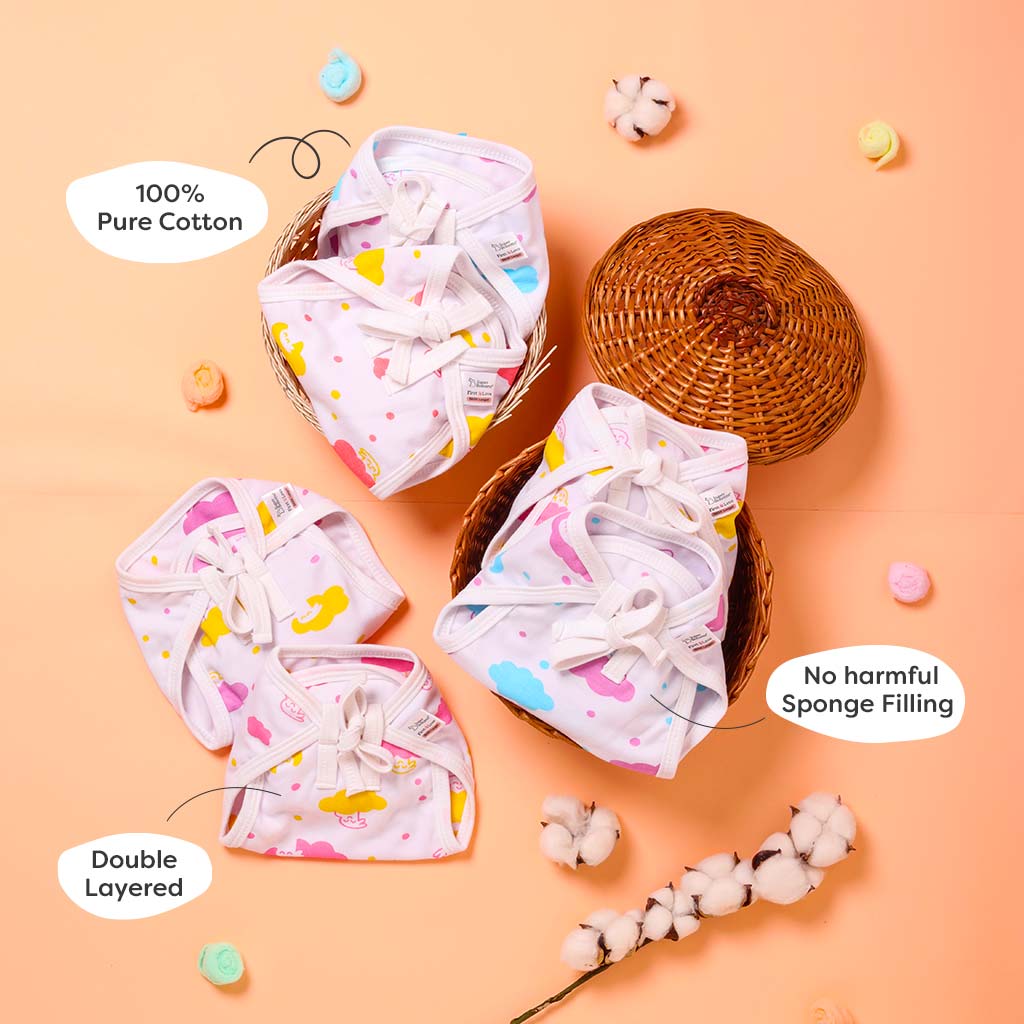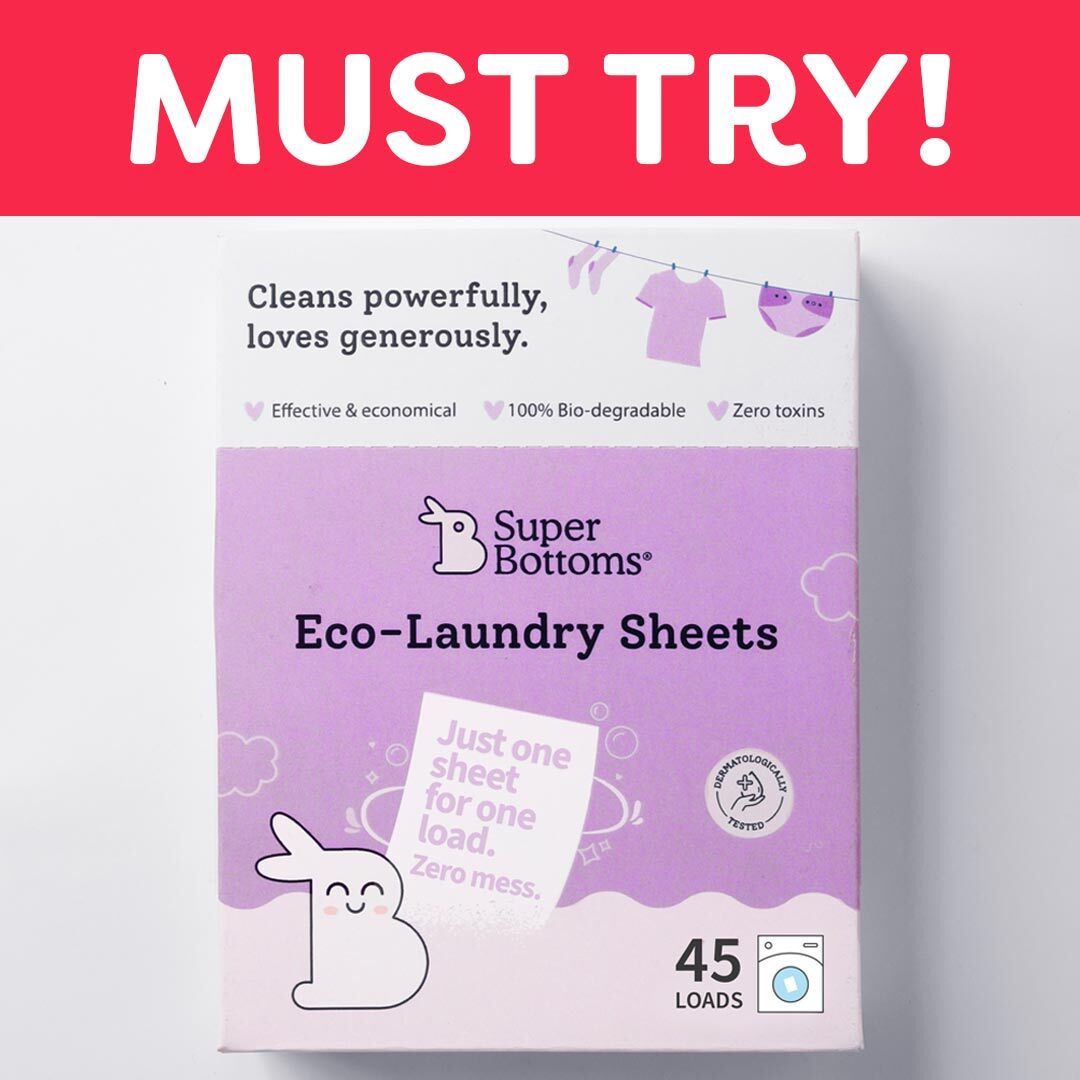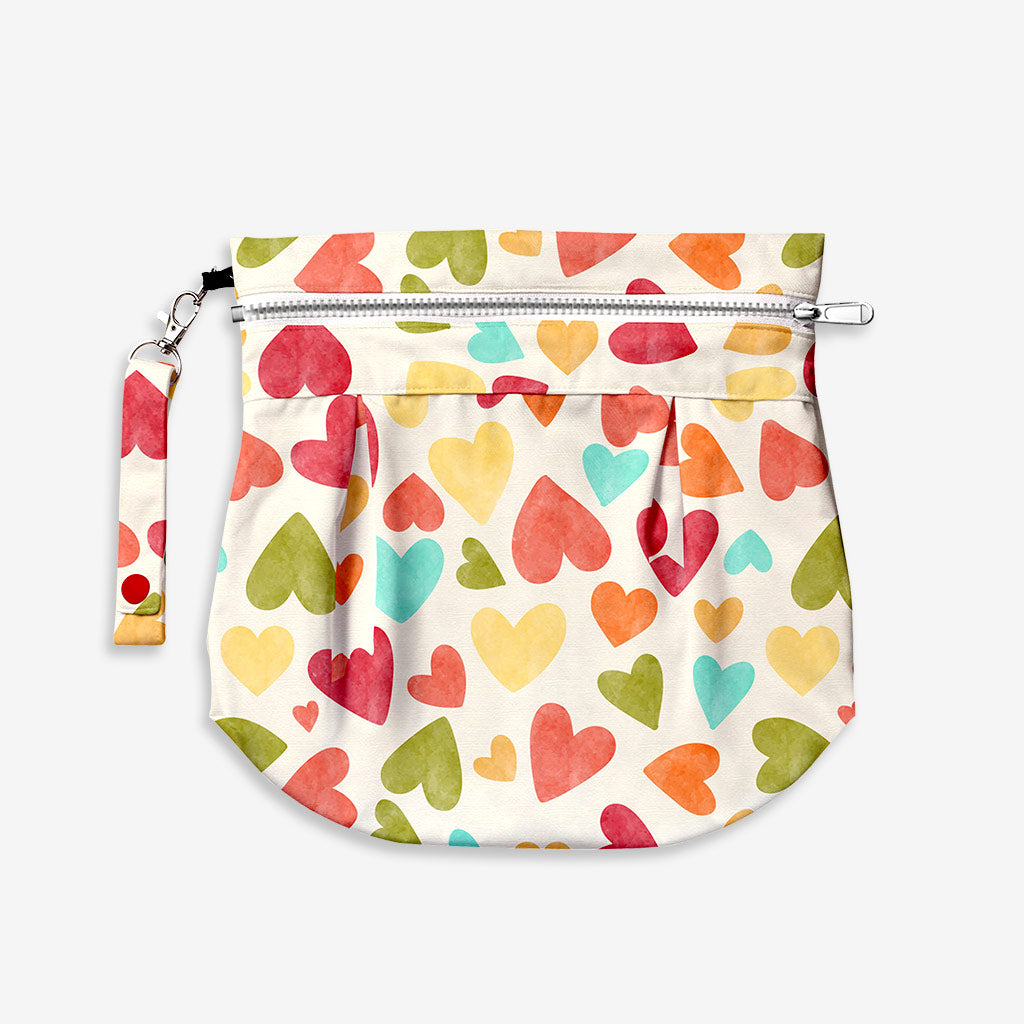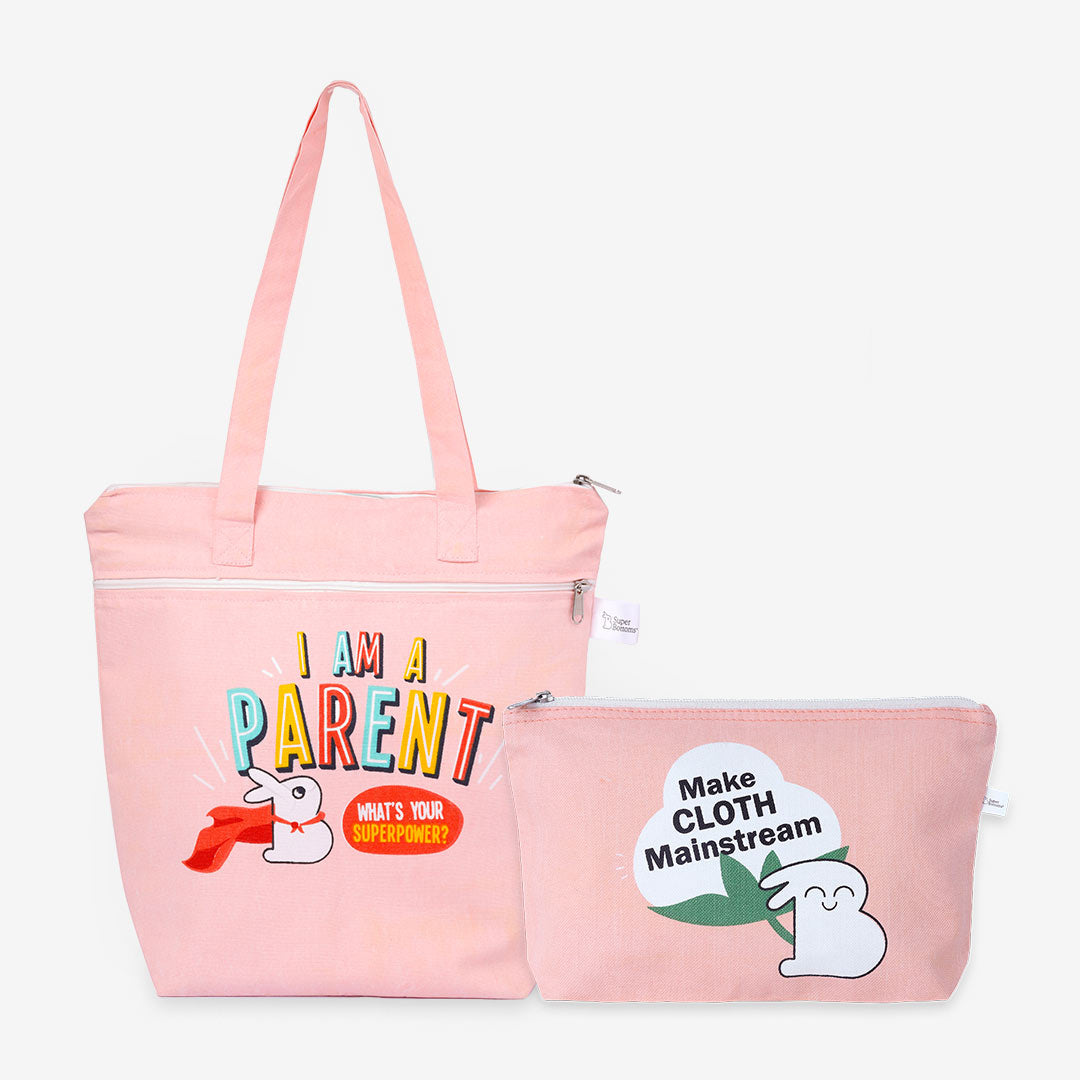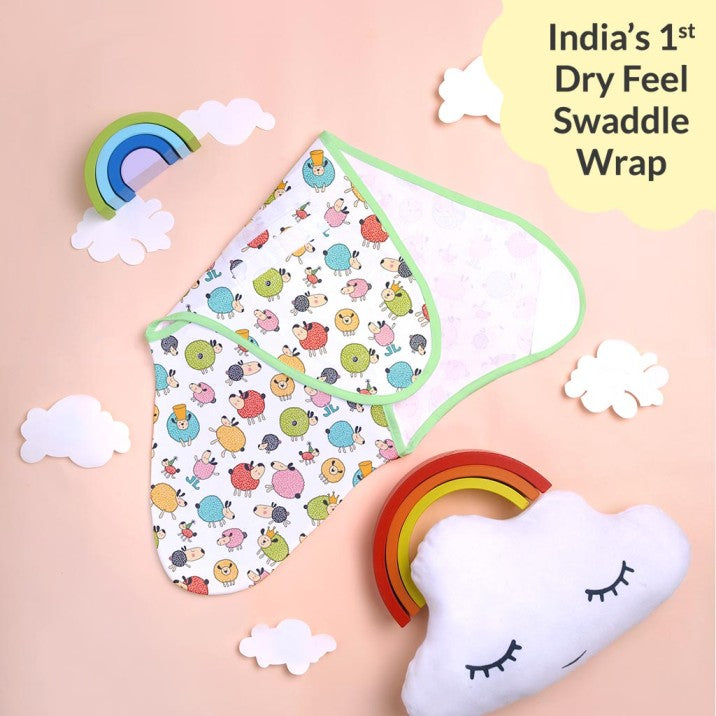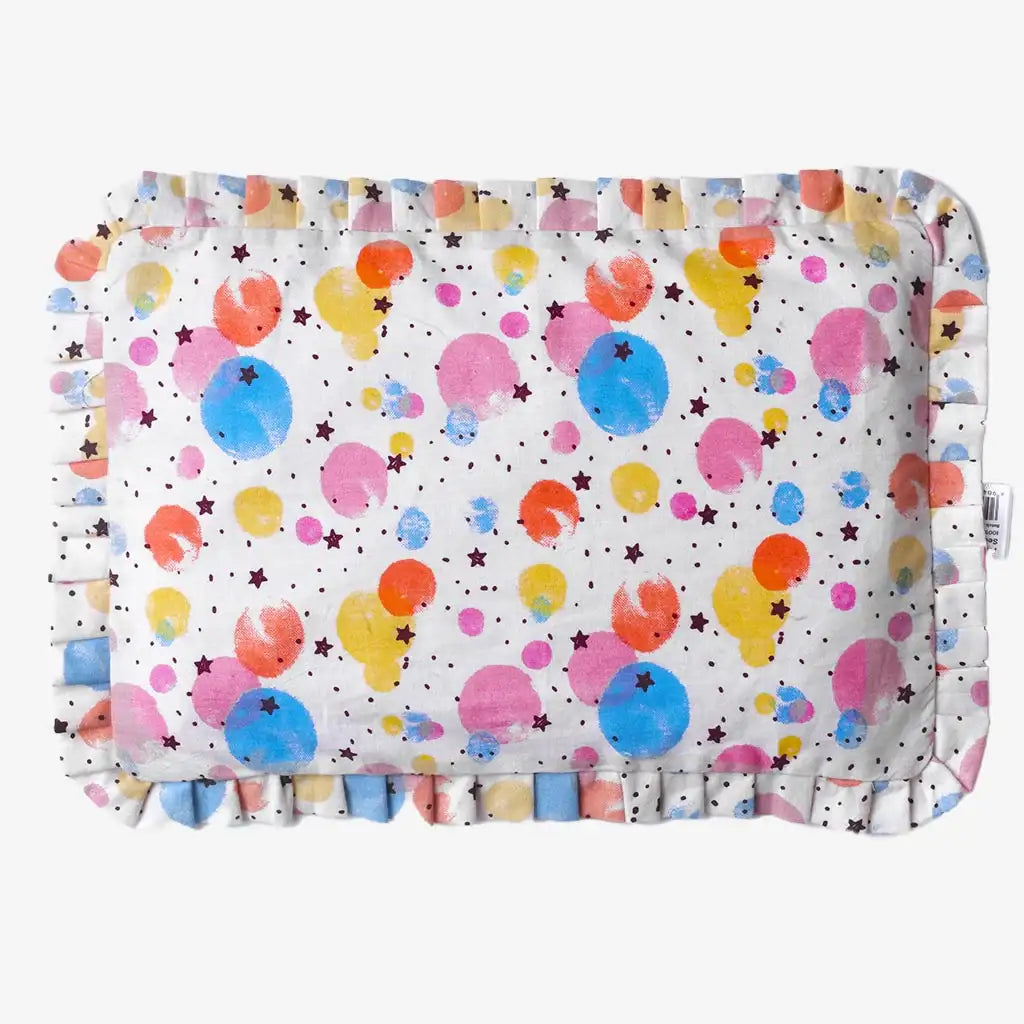• Introduction
• Cloth Diapering – The Fact Sheet
• Choosing The Right Cloth Diapers
• The Perfect Wash Routine
• The Essentials & Accessories You Will Need
• Key Takeaways
• FAQs
• Message From SuperBottoms
Take your child on a blissful cloth diapering adventure and learn the keys to a harmonious experience that works for both of you. Once considered impossible, cloth diapering has developed into a pleasurable and sustainable habit with several advantages. In this article by SuperBottoms, we will help you master the art of cloth diapering, equipping you with the skills and information necessary to have the best possible diapering experience. We will walk you through every stage of the process, from selecting the ideal cotton diapers and accessories to setting up a productive washing schedule and resolving frequent problems. Get into the delight of cloth diapering and provide your child with a caring and sustainable upbringing. Discover the keys to a flawless cloth diapering experience and enjoy the benefits of sustainable parenting. Before we begin, in the following section, let us see some useful facts & history related to cloth diapers.
Cloth Diapering – The Fact Sheet
|
Sr. No |
Cloth Diapers Facts & History |
| 1. |
Cloth diapers have been used for centuries, with evidence dating back to ancient times. |
| 2. |
In the past, cloth diapers were made from linen, cotton, or wool. |
| 3. |
The concept of using cloth for diapering evolved with the introduction of safety pins and rubber pants for better containment. |
| 4. |
During the 20th century, cloth diapers became more standardized with the invention of prefold diapers and diaper services. |
| 5. |
In the 1940s, disposable diapers were introduced, leading to a decline in the use of cloth diapers. Today, on average, disposable diapers generate 3.4 million tons of landfill waste. |
| 6. |
Cloth diapering experienced a resurgence in the late 20th century and continues to be popular due to environmental concerns and cost savings. |
| 7. |
Modern newborn cloth diapers come in various styles and materials, offering parents more choices for diapering babies. |
| 8. |
Cloth diapering communities such as Parent's Tribe in India have formed online, providing support, advice, and resources for parents interested in using cloth diapers. |
| 9. |
Baby cloth diapers have evolved to be more user-friendly with features like adjustable sizing, easy-to-use closures, and improved absorbency. |
| 10 |
Many parents choose cotton diapers for their babies due to concerns about the chemicals and environmental impact of disposable diapers. |
Choosing The Right Cloth Diapers
It is just a matter of one Google search, and you will get to know 100s of reasons why disposable diapers are harmful to your baby and the environment. Needless to say, reusable diapers that are pocket-friendly, eco-friendly, and skin-friendly are the best diapering solution for your baby. However, there are several kinds of reusable cloth diapers. Let us see which one is the right choice.
1. Newborn Nappy/Langot – You will find many options in the market for nappies – ranging from the ones with plastic covers to single-layer cloth that will make a mess every time your baby will pee or poop. This defeats the purpose of diapering your newborn. Check out the First Love Langot range from SuperBottoms, made from soft & pure fabrics such as mulmul & cotton, with multiple layers that can soak one pee without leaking to the clothes or the bed. This is an ideal choice for a newborn baby for the first few months before they get used to modern cloth diapers & for giving them diaper-free time.
2. Newborn & Freesize UNO cloth diapers – Once your baby starts to have a regular bowel movement and the frequency between each pee and poop increases, it is time to move them to the best cloth diapers in India – SuperBottoms UNO. These diapers can fit from 7 KG to 17 KG, making them the perfect diapering partner to last your baby through the complete cloth diapering journey.
3. Padded Underwear – Once your baby shows signs of readiness for potty training, it is time to let them be diaper-free and start with padded underwear. It has a semi-waterproof outer layer that does not allow the clothes, bed soil, or get wet. It can easily absorb one pee and let your baby feel the dampness, making it easier for them to identify the bodily cues to use the bathroom. This helps them get potty trained faster and independently.
The Perfect Wash Routine
• Pre-wash: Give your diapers a quick rinse to get rid of any poop or pee.
• Main wash: Use hot water and a gentle, fragrance-free detergent. Skip the fabric softeners and bleach, as they are unsuitable for your cloth diapers.
• Extra rinse: Add an extra rinse cycle to ensure all the detergent is gone.
• Drying: Tumble dry your diapers on low heat or hang them to dry. Please do not overdo it with the heat. It can damage the reusable cloth diapers & reduce their life.
• Stripping (If needed): If your diapers smell funky, you can strip them to remove buildup. Use a stripping solution or follow a specific stripping method.
|
Limited Offers Ending Sooner - BUY NOW Now or never offers live on the SuperBottoms website. Take advantage of the never-before Good Value for Money on our offer page! Stock up on the bestselling UNO diapers, accessories & other popular SuperBottoms baby and mom products now available in deals and discounts. HURRY, the Deals are Live till stocks last! |
Additional Bonus tips:
• Wash your diapers every 2-3 days.
• Do not stuff too many diapers into the washing machine.
• Give your washing machine a water wash cycle every now and then to prevent detergent buildup.
• Use a diaper pail with a lid to keep your dirty diapers contained.
• Skip the diaper liners; they can mess with the washing process.
• Add 1/2 cup of white vinegar to the rinse cycle if your diapers get stinky.
• That is, it! Follow these simple steps, and you will have clean, fresh cloth diapers that will last years.
The Essentials & Accessories You Will Need
Some extra things can make it easier if you are into using cloth diapers. You will want diaper pail liners and wet bags to stash the dirty diapers until you do the laundry and cloth wipes for cleaning up during changes.
The SuperBottoms UNO comes with these cool cloth wipes made of organic cotton that you can wash and reuse. It also has an optional booster for extra absorbency at night or during naps.
Using cloth diapers can be great for eco-friendly and budget-conscious parents. Pick the right diapers, take care of them, get the fit right, and handle any leaks or stains, and you will be good to go!
Key Takeaways
1. Selecting the correct cloth diaper is important for a great cloth diapering experience. The SuperBottoms UNO is an all-in-one cloth diaper that fits babies from 5 kg to 17 kg, with a waterproof outer layer.
2. Getting your cloth diapers ready before using them is key to improving how much they can absorb and avoiding buildup. The SuperBottoms UNO includes a prep guide to help you prep your new cloth diapers correctly.
3. The perfect fit is crucial to prevent leaks and keep your baby comfortable. The SuperBottoms UNO features an adjustable snap system for a customized fit and a stretchy waistband and leg cuffs for a secure, comfy fit.
FAQs
Q1 – Which diapers are more environmentally friendly – cloth diapers or disposable diapers?
Ans – Cloth diapers are more environmentally friendly than disposable diapers because they are made from renewable resources, can be reused multiple times, and are biodegradable. Disposable diapers, on the other hand, are made from non-renewable resources, take hundreds of years to decompose, and contribute to landfill waste and microplastic pollution.
Q2 – Are cloth diapers more cost-effective than disposable diapers?
Ans – In the long run, cloth diapers are more cost-effective than disposable diapers. While the initial investment in cloth diapers is higher, they can be reused hundreds of times, significantly reducing the cost per diaper change. Disposable diapers, however, are a recurring expense that adds up over time. With modern cloth diapers such as SuperBottoms UNO, you only need 16 diapers for your child's entire cloth diapering journey.
Q3 – Can cloth diapers lead to diaper rash in babies?
Ans – If proper washing routine & change routine are maintained, there are barely any chances of cloth diapers leading to skin rash or diaper rash for your baby.
Message From SuperBottoms
Hi there, new parents! No matter where you are around the world or in India, SuperBottoms ensures your kids are using the best and safest products. SuperBottoms offers the best cloth diapers, padded underwear for toddlers and period underwear for women. These products suit your baby's delicate skin at any time of year. SuperBottoms is a must-have product for you and your child whether you live in Canada, Kuwait, the United States, Qatar, Hawaii, Bahrain, Armenia, the United Arab Emirates, or the Philippines. SuperBottoms products are also available on Amazon, Myntra, Flipkart & Firstcry.
Reference Links
1. https://www.healthline.com/health/how-to-wash-cloth-diapers
2. https://www.healthychildren.org/English/ages-stages/baby/diapers-clothing/Pages/Diapers-Disposable-or-Cloth.aspx



